| Title | Klondike Gold Rush - Seattle Unit |
| Park Code | klse |
| Description | Seattle flourished during and after the Klondike Gold Rush. Merchants supplied people from around the world passing through this port city on their way to a remarkable adventure in the Yukon Territory of Canada. Today, the park is your gateway to... |
| Location | |
| Contact | |
| Activities |
|
| Entrance fees |
|
| Campgrounds | Count: 0
|
| Places | Count: 50
3- Japanese American Exclusion MemorialStaffed seasonally Bush Garden (#30)Opened in this location on June 9, 1957 by father and son Kaichi and Ron Seko. Seattle’s largest Japanese restaurant in the 1960s with 40 tatami rooms on 2 floors. Known for its karaoke, offered since 1970s. 
Cadillac Hotel (#22)Run by Kamekichi and Haruko Tokita family from 1913 until WWII forced their removal and incarceration. Present location of the NPS Klondike Gold Rush National Historical Park. 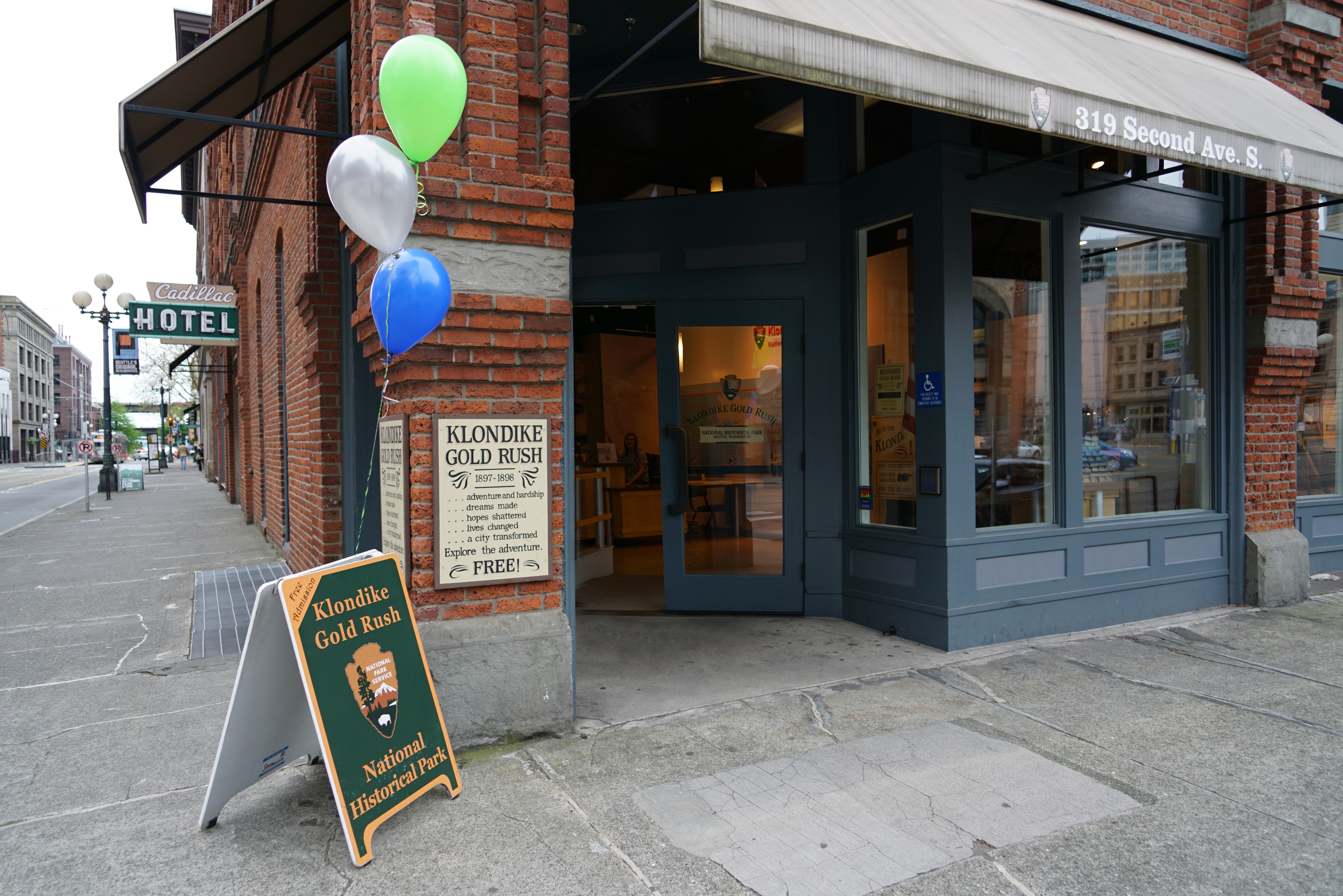
Cherry Land Florist (#31)Opened in 1932 by Tamano and J.M. Kobata. Started as a small grocery store and grew into large retail flower shop. 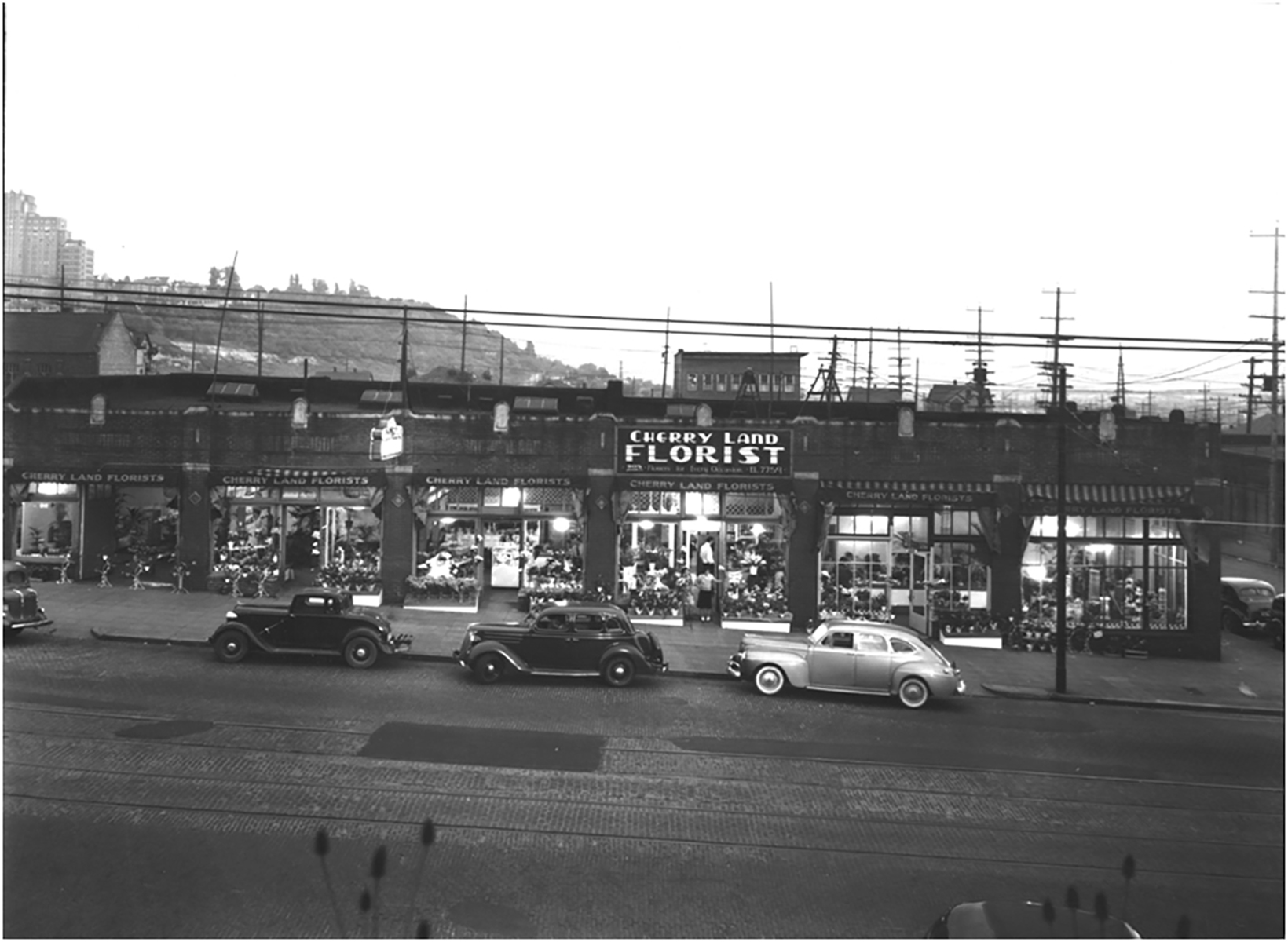
Chiyo’s Garden (#6)Pays tribute to Chiyo Murakami and evokes the spirit of children growing up in Japantown. Nihonmachi Fence shows the rise and fall of Seattle’s Japanese American population. 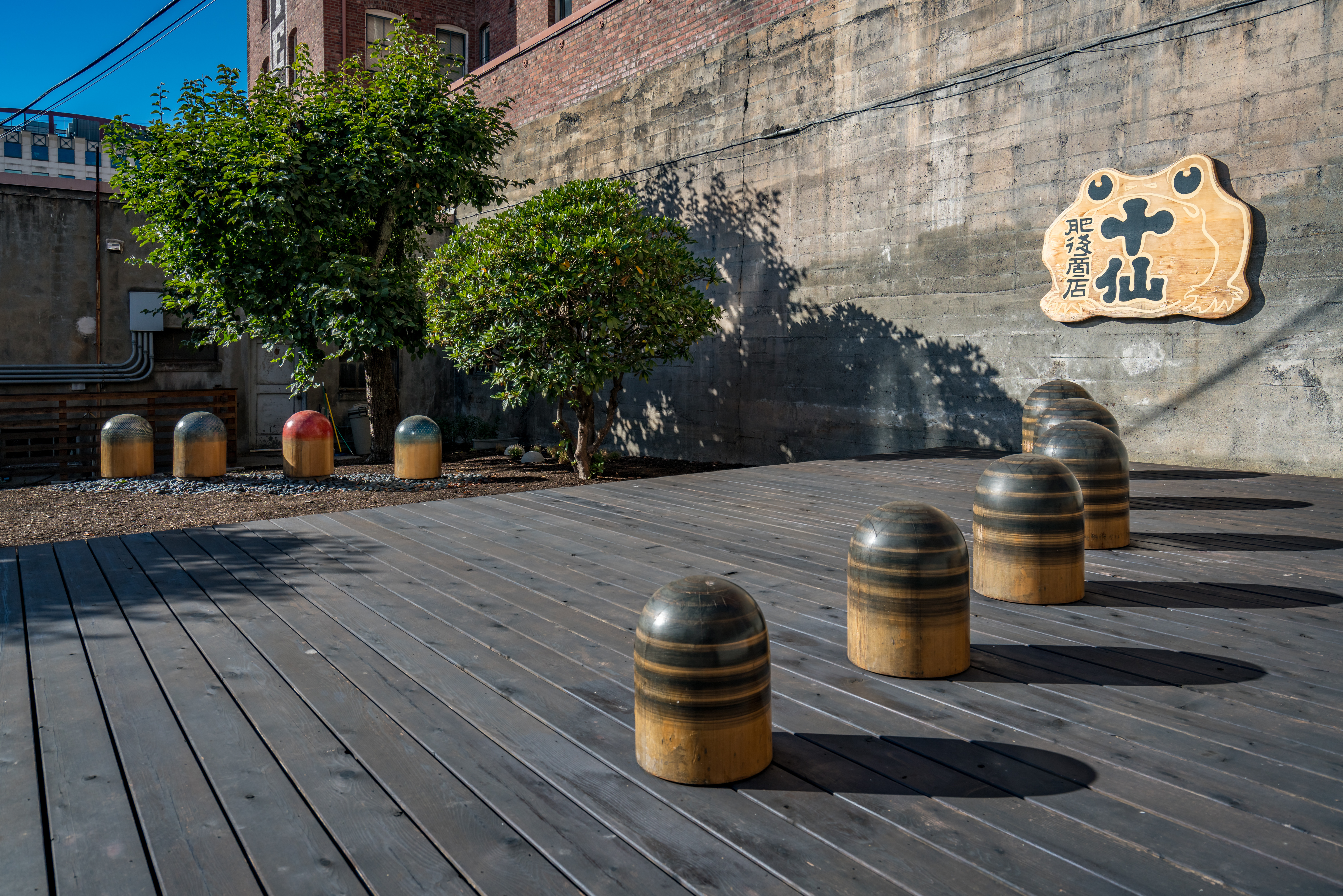
Collin’s Playfield (#39)Originally took up 2 entire blocks. Run from 1913-1971, neighborhood youth from different ethnic backgrounds came together to play baseball and basketball here. 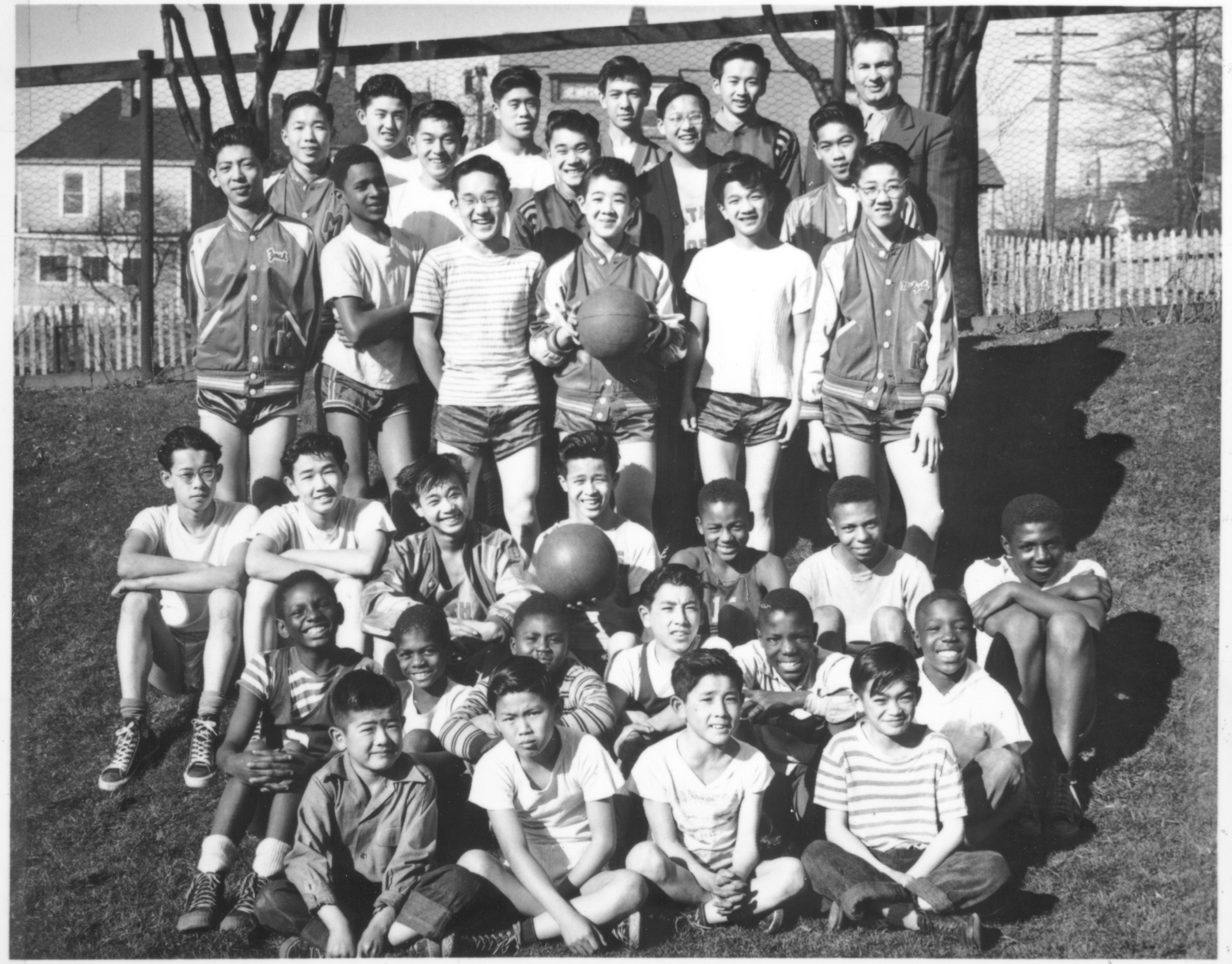
Furuya Company (#20)Founded in 1892. Started as a tailor shop, then grew into retail, import-export, labor contracting and banking business. 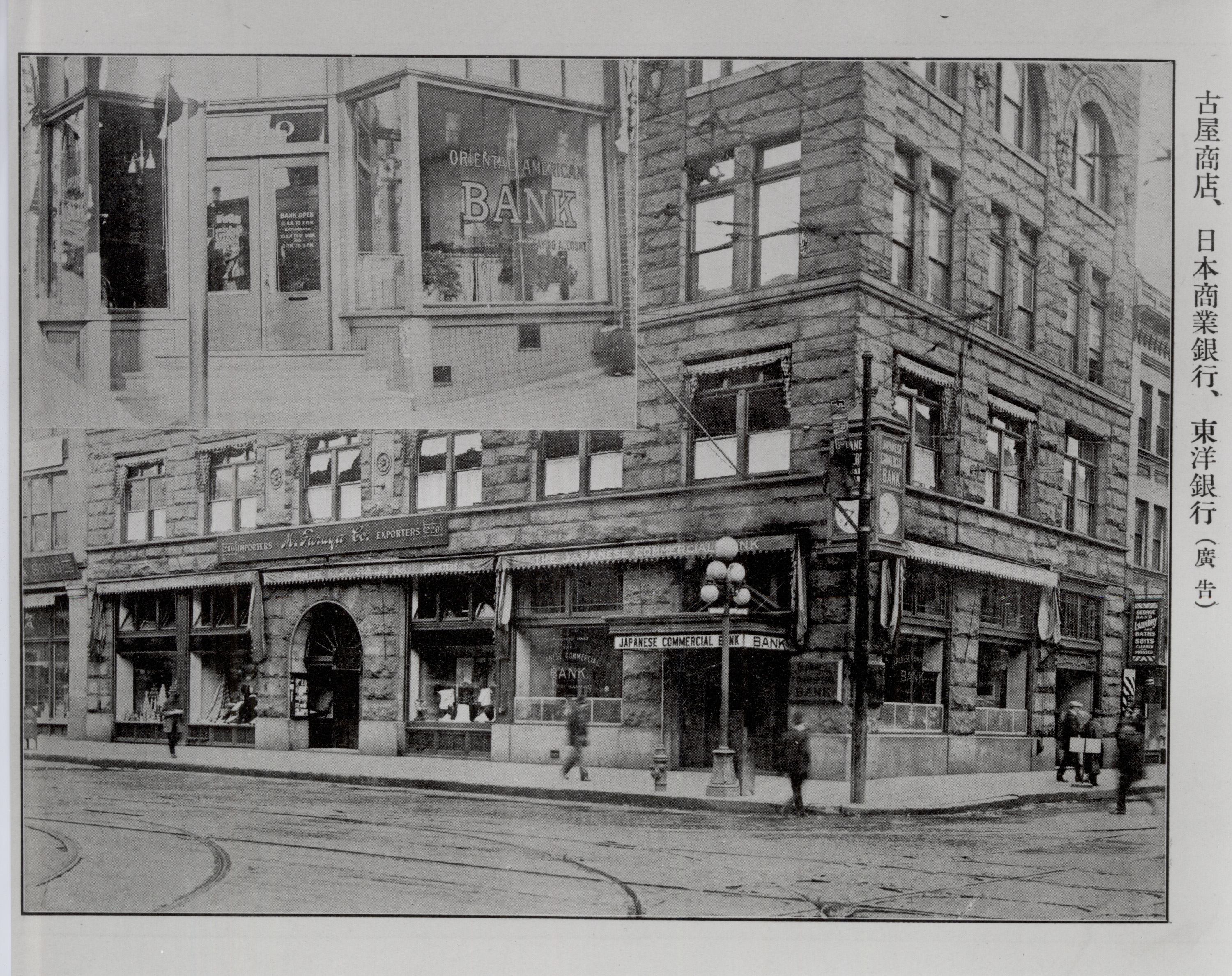
Hirabayashi Place (#19)Located at the south entrance, a mural by Roger Shimomura depicts the life of Gordon Hirabayashi, who resisted the WWII forced removal. 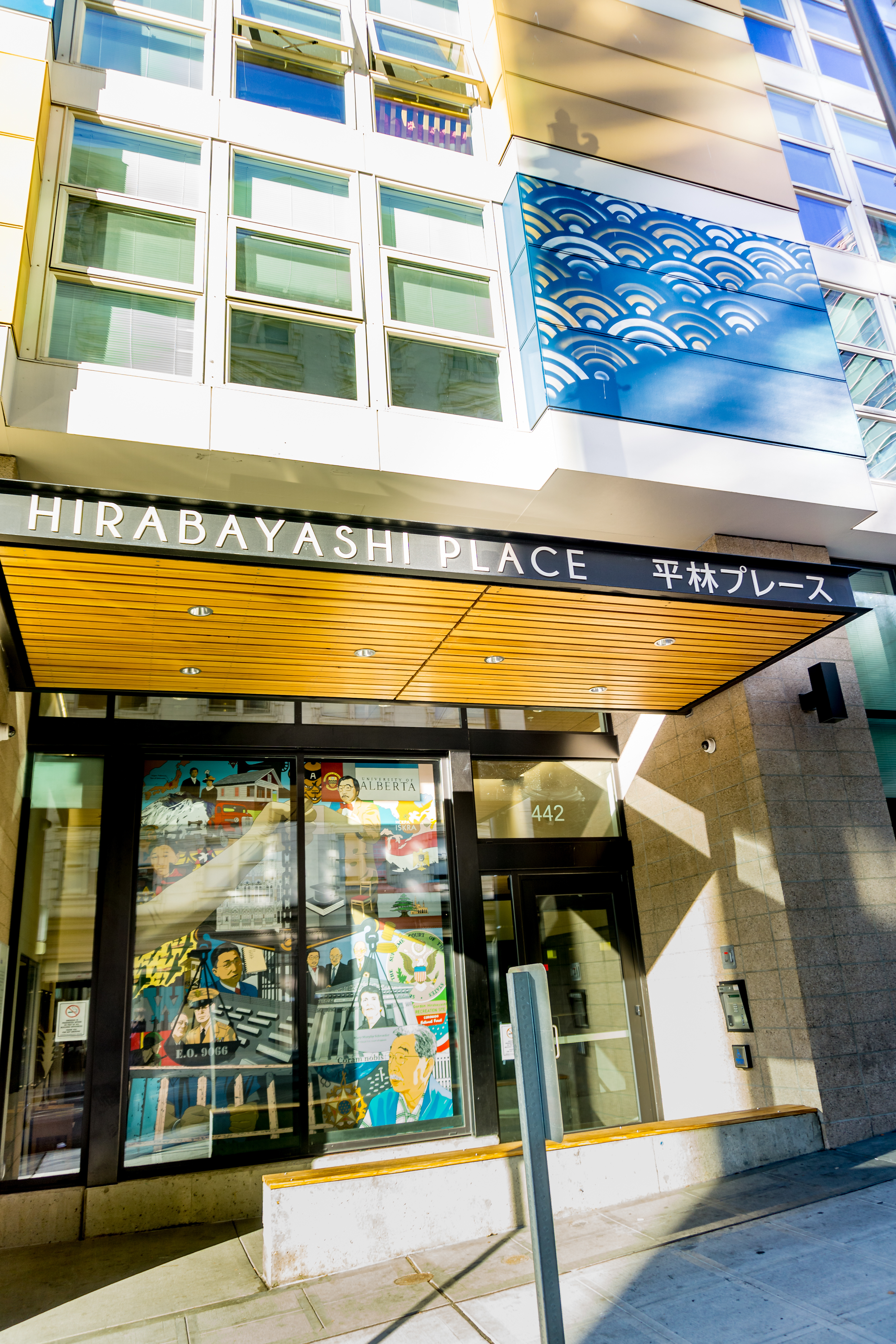
INS Building (#27)Used to detain Issei (first generation) Japanese community and business leaders amid wartime hysteria and racism that followed the bombing of Pearl Harbor in December 1941. 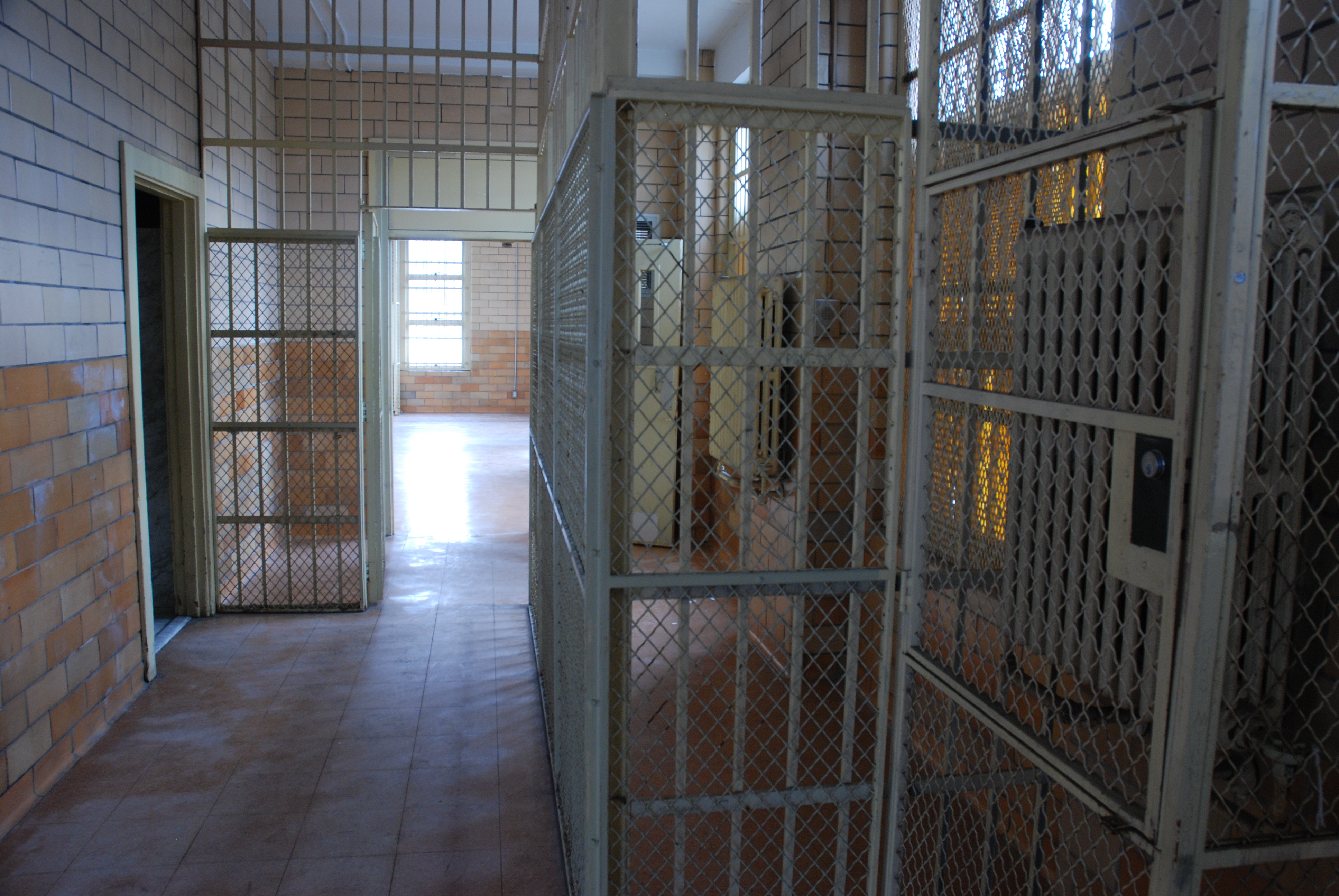
Itsumono Izakaya (#7)Run by Mike Vu and Hisato Kawaminami with a creative menu of Japanese and Asian fusion drinks and food. 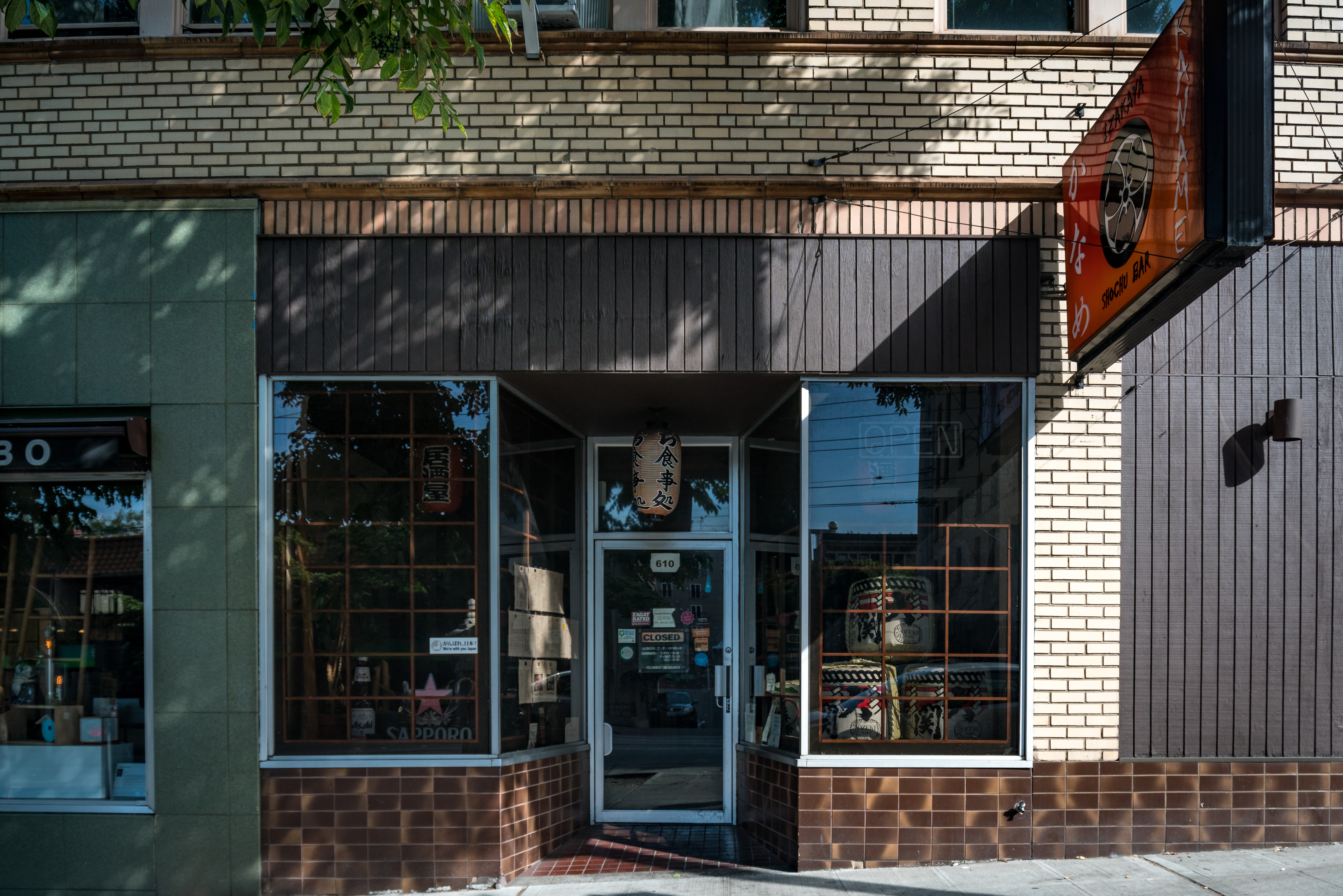
Jackson Building Warehouse (#10)Jackson Building Warehouse 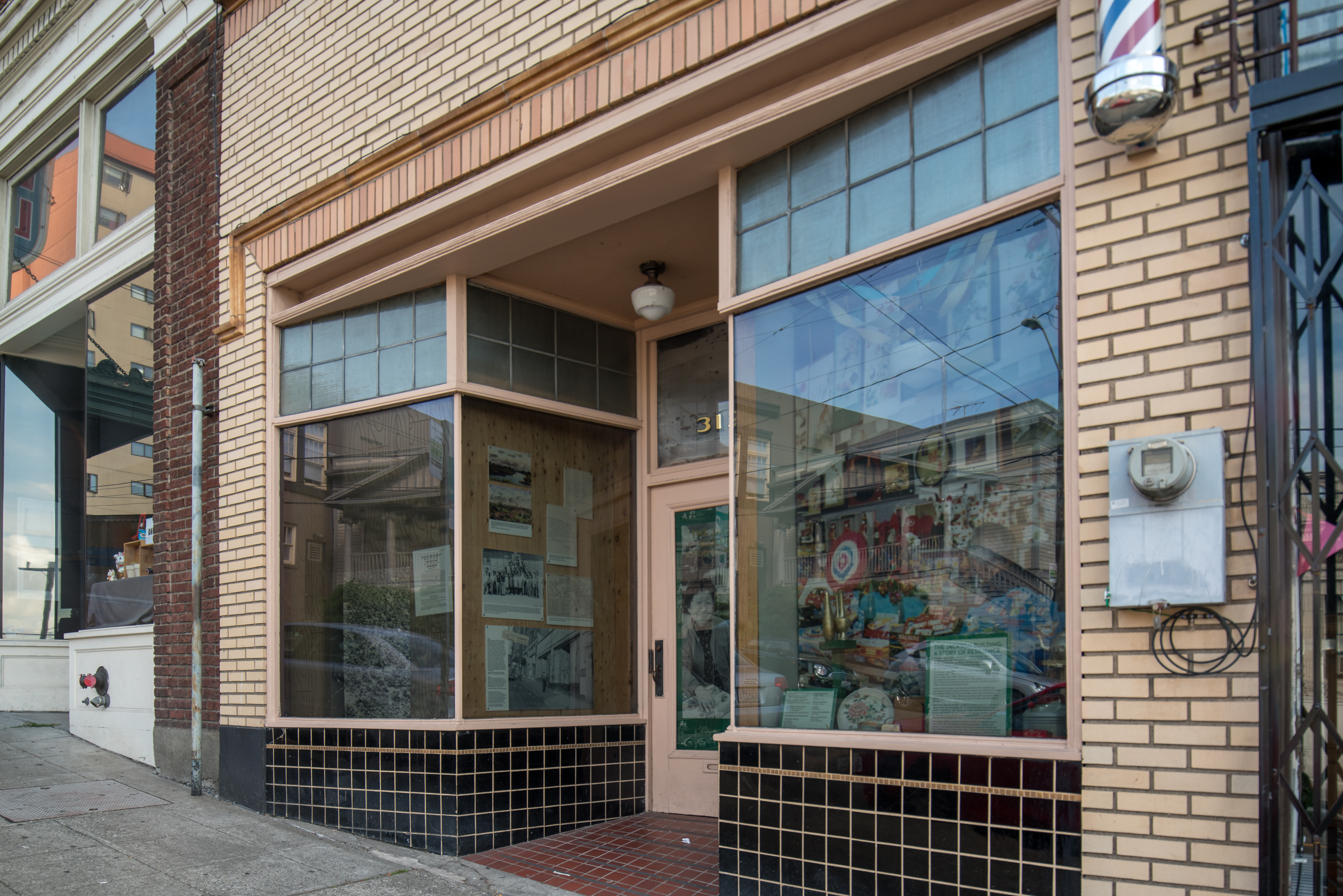
Japanese American Courier (#18)Started by Jimmy Sakamoto, first Japanese American newspaper printed entirely in English in the US. 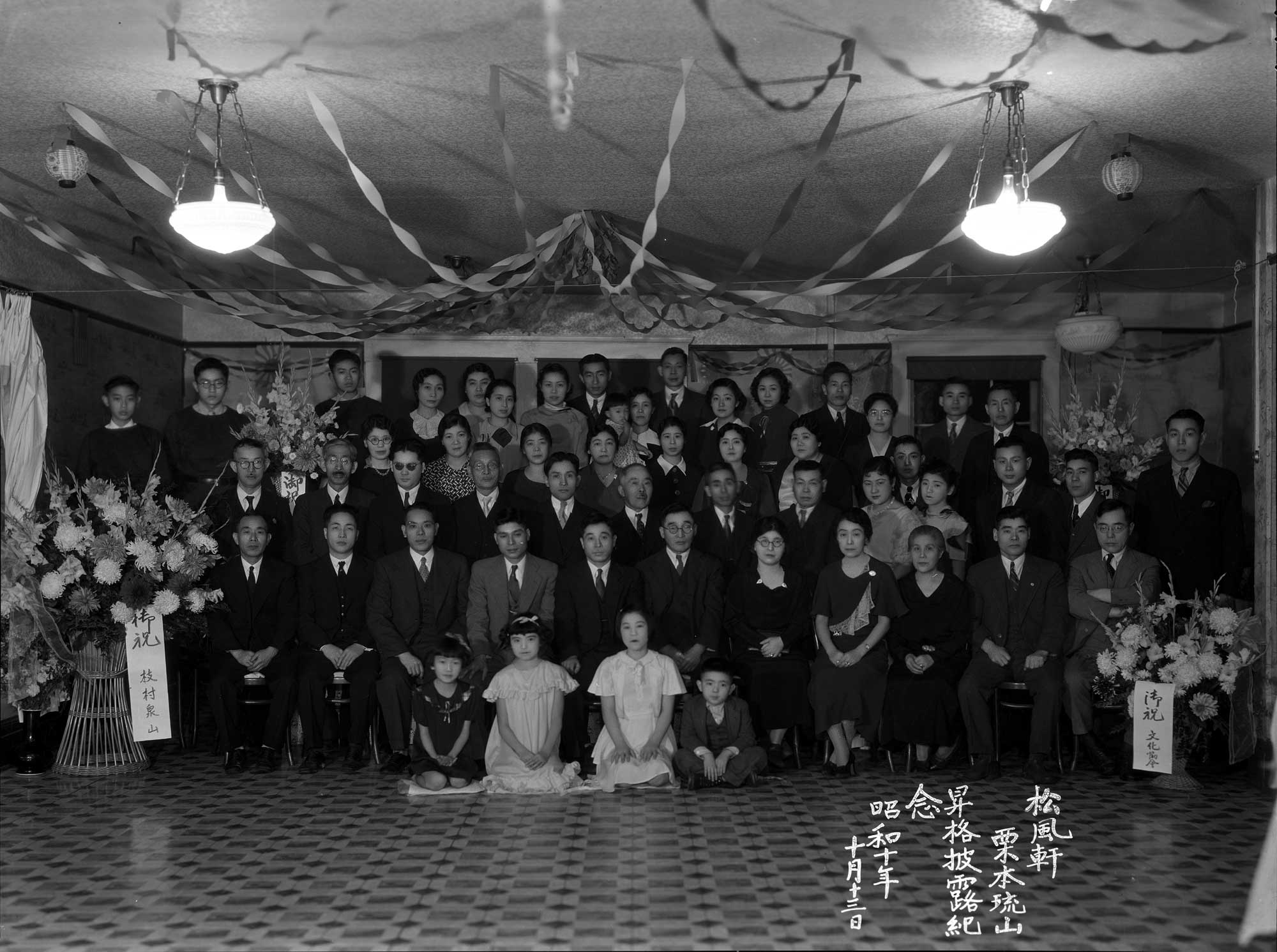
Japanese American Exclusion Memorial Audio Tour - Stop 1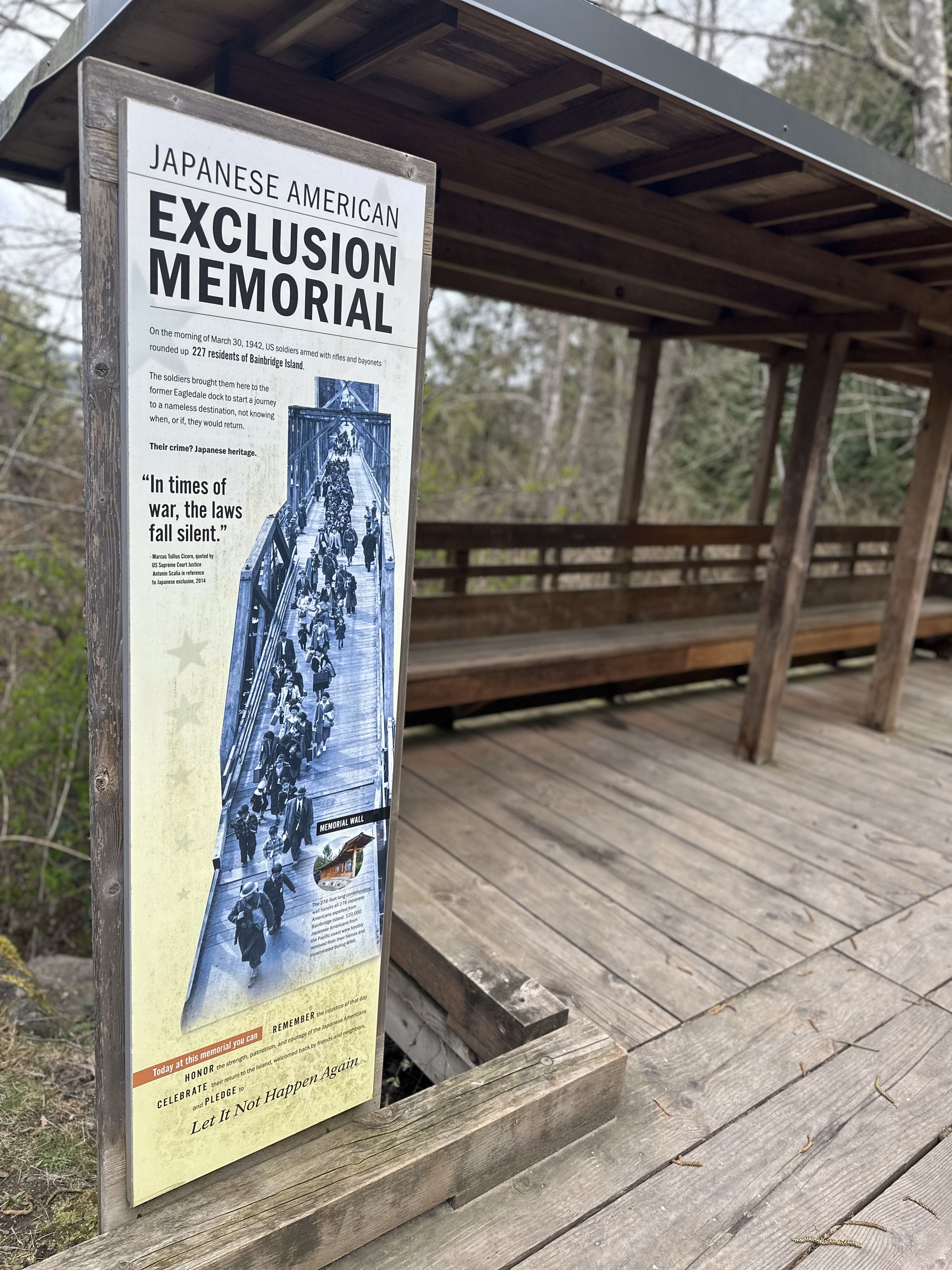
Japanese American Exclusion Memorial Audio Tour - Stop 10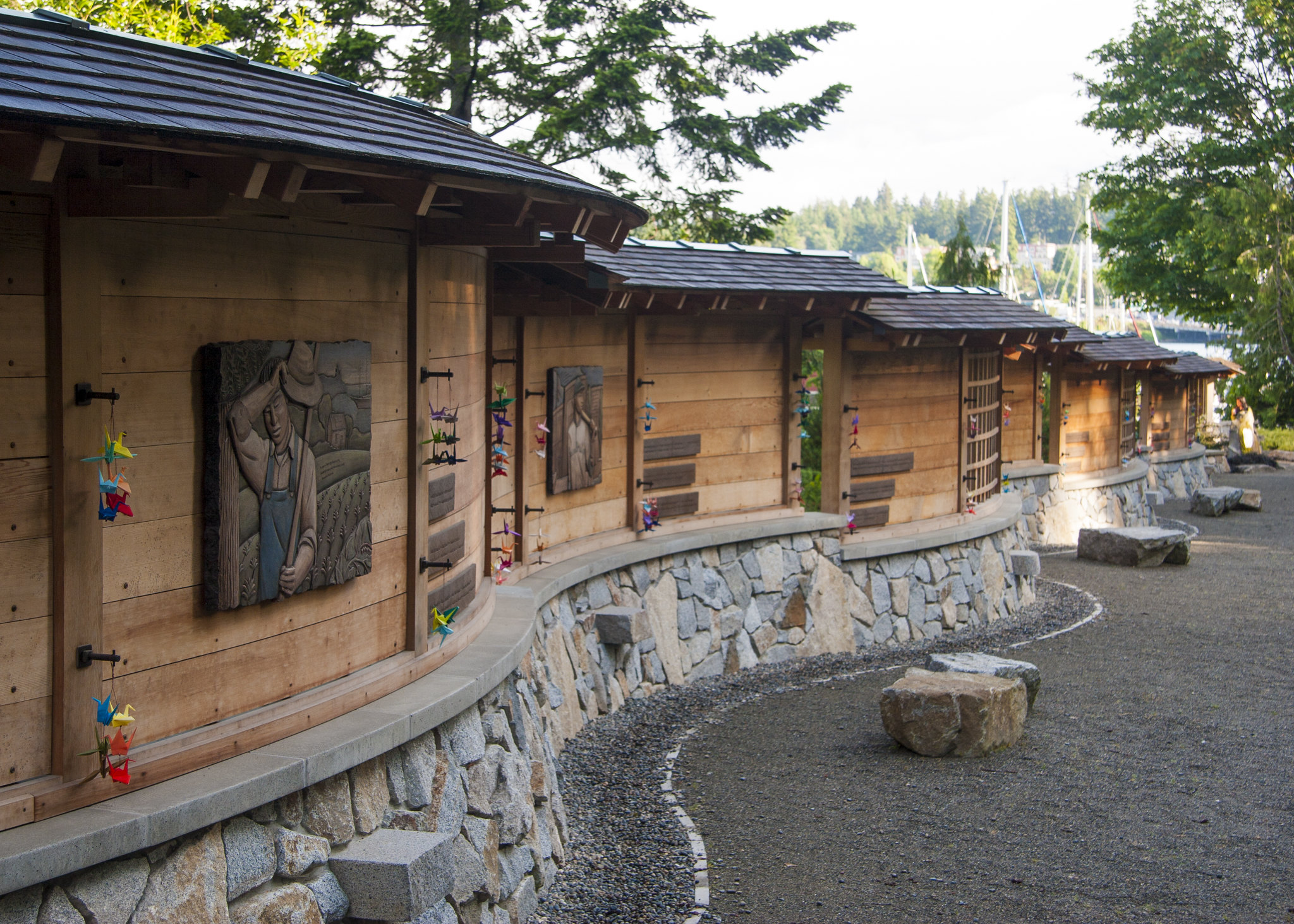
Japanese American Exclusion Memorial Audio Tour - Stop 11
Japanese American Exclusion Memorial Audio Tour - Stop 12
Japanese American Exclusion Memorial Audio Tour - Stop 13
Japanese American Exclusion Memorial Audio Tour - Stop 14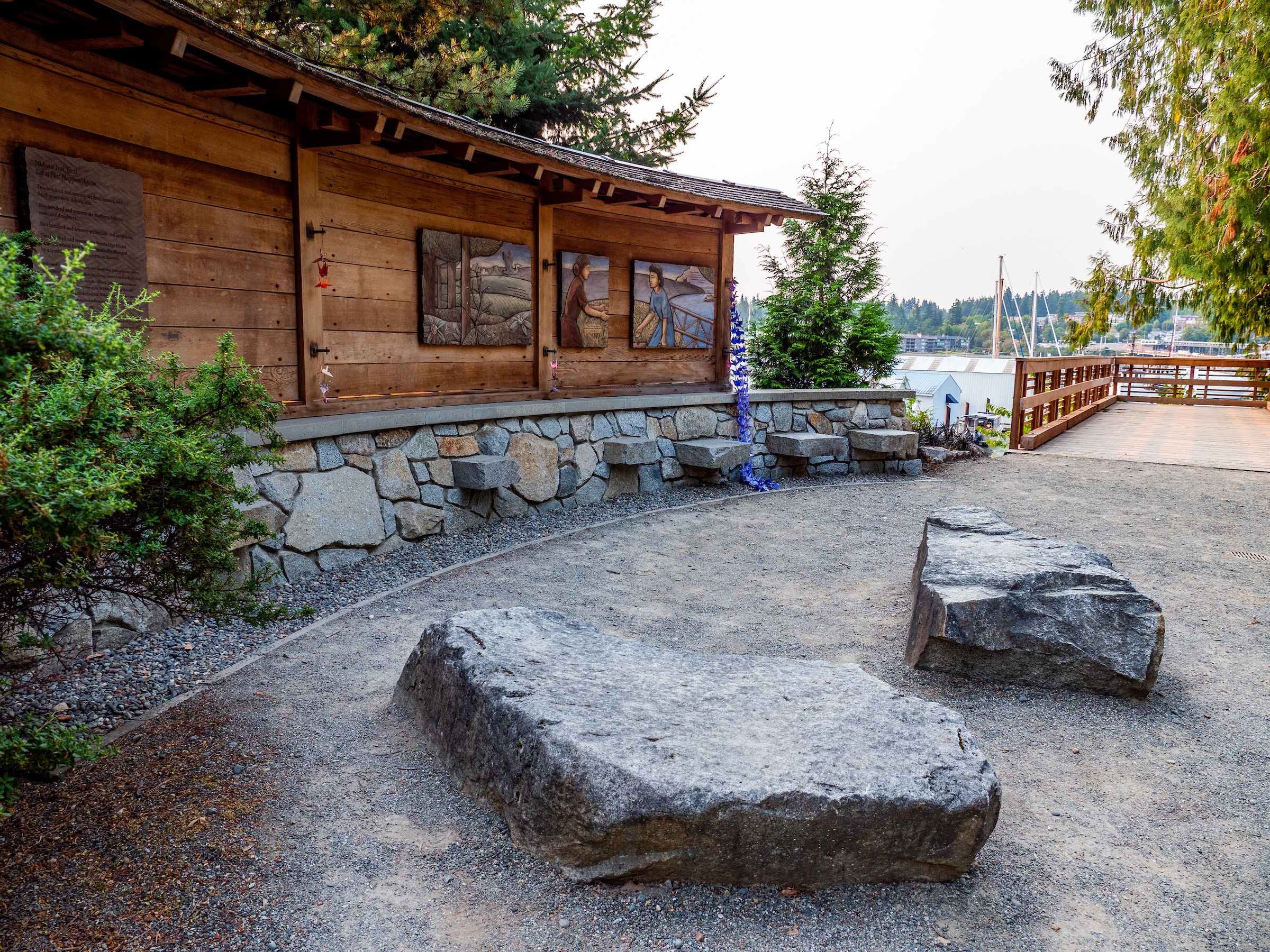
Japanese American Exclusion Memorial Audio Tour - Stop 15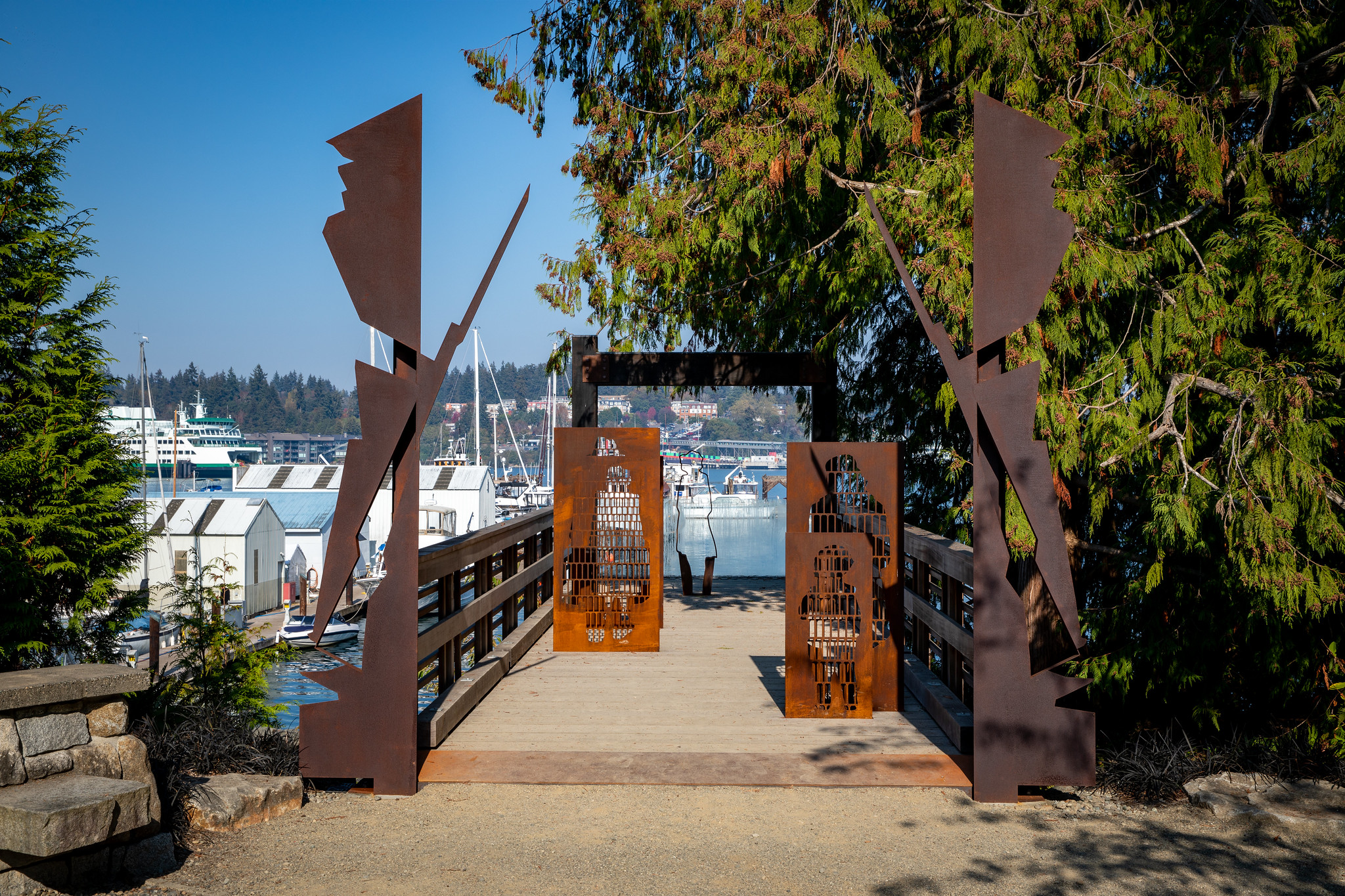
Japanese American Exclusion Memorial Audio Tour - Stop 16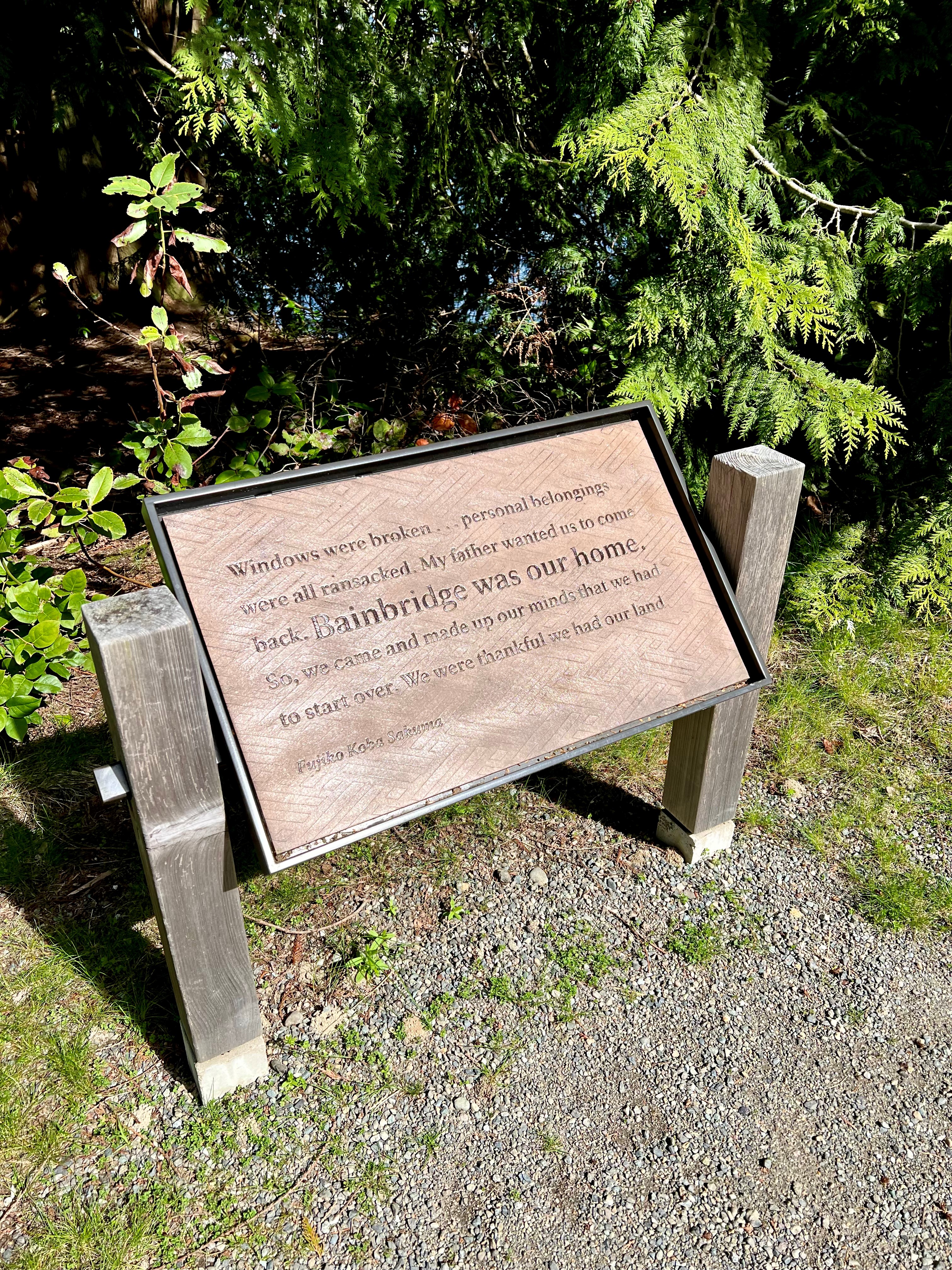
Japanese American Exclusion Memorial Audio Tour - Stop 2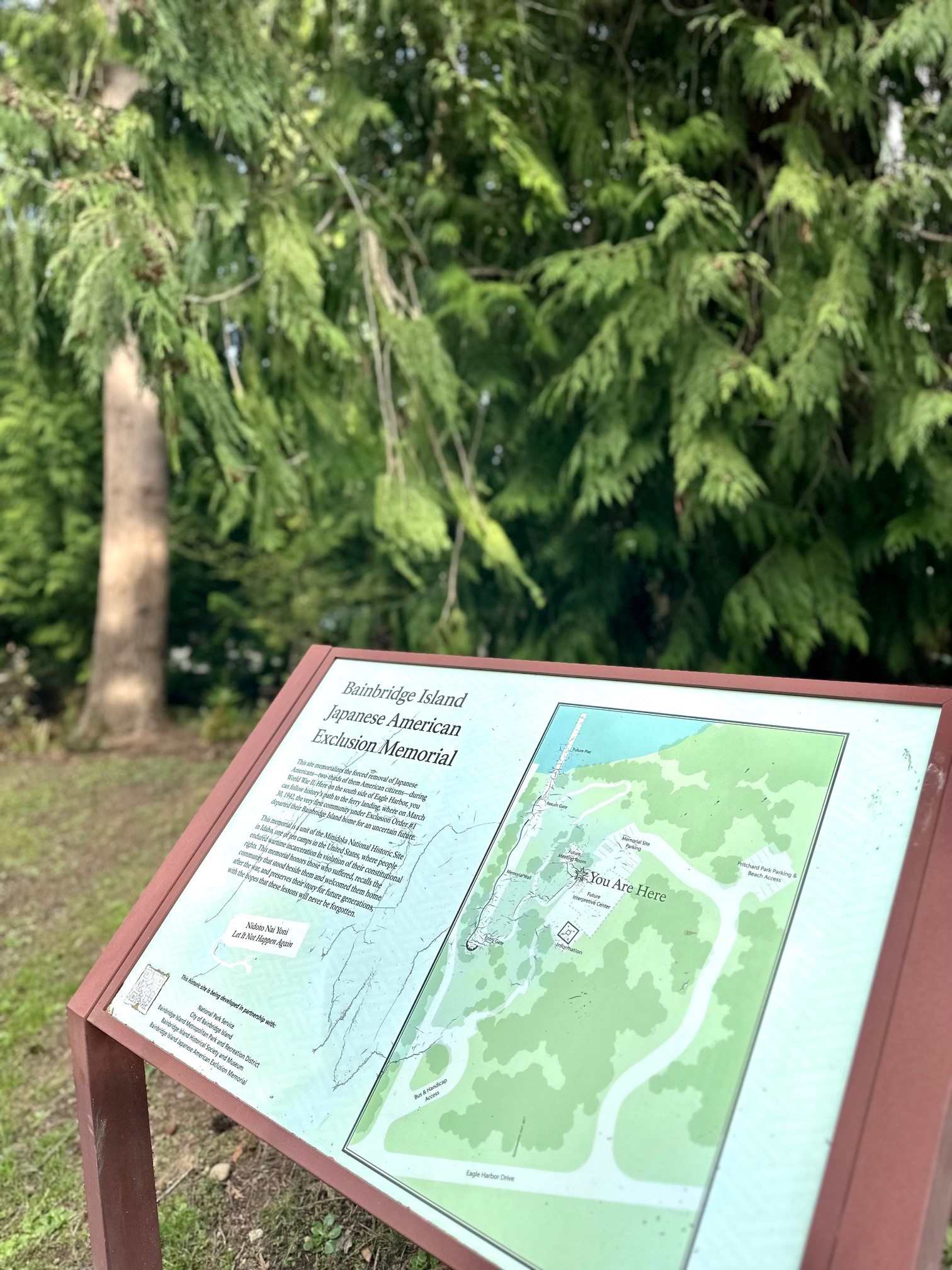
Japanese American Exclusion Memorial Audio Tour - Stop 3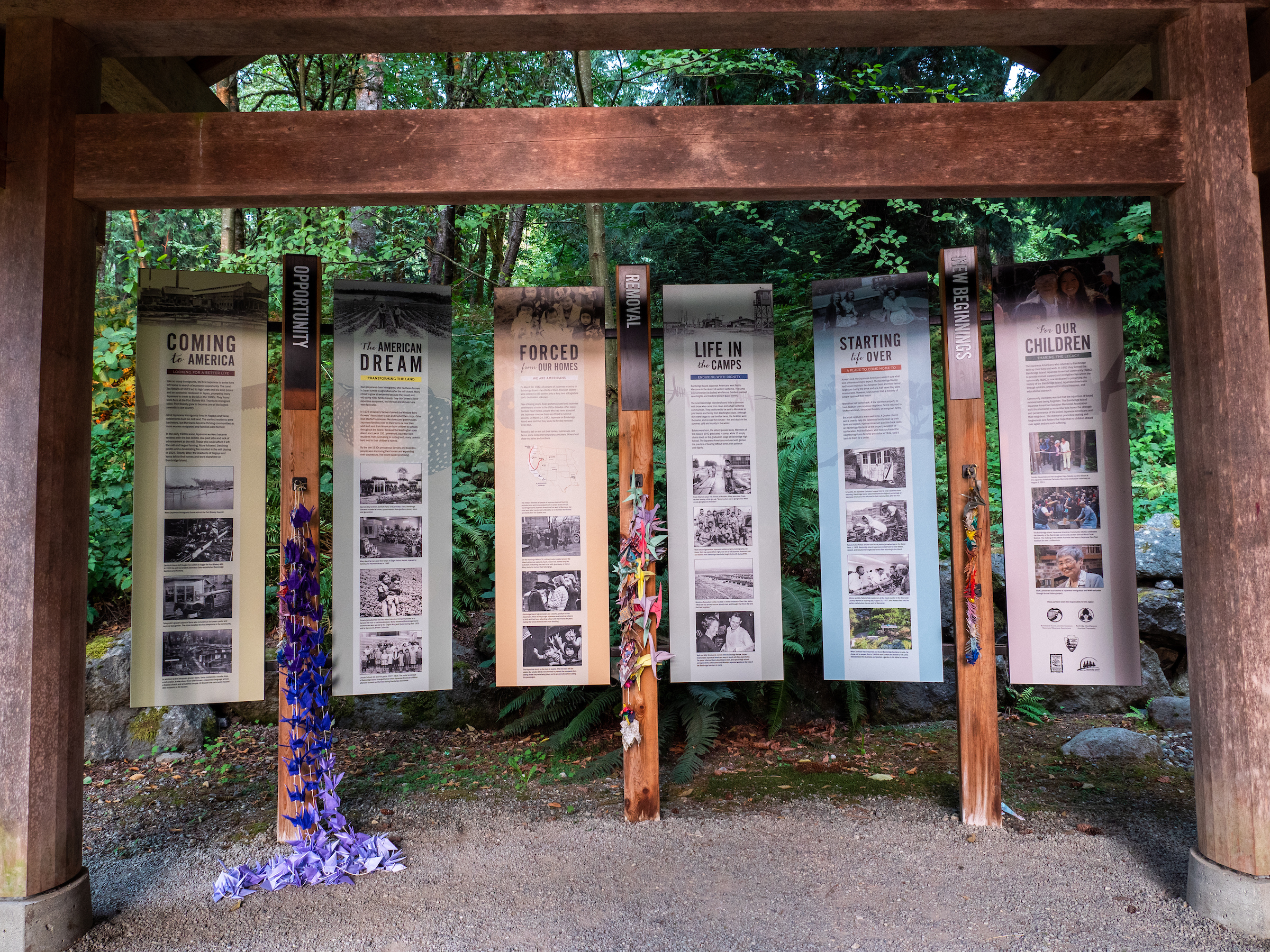
Japanese American Exclusion Memorial Audio Tour - Stop 4
Japanese American Exclusion Memorial Audio Tour - Stop 5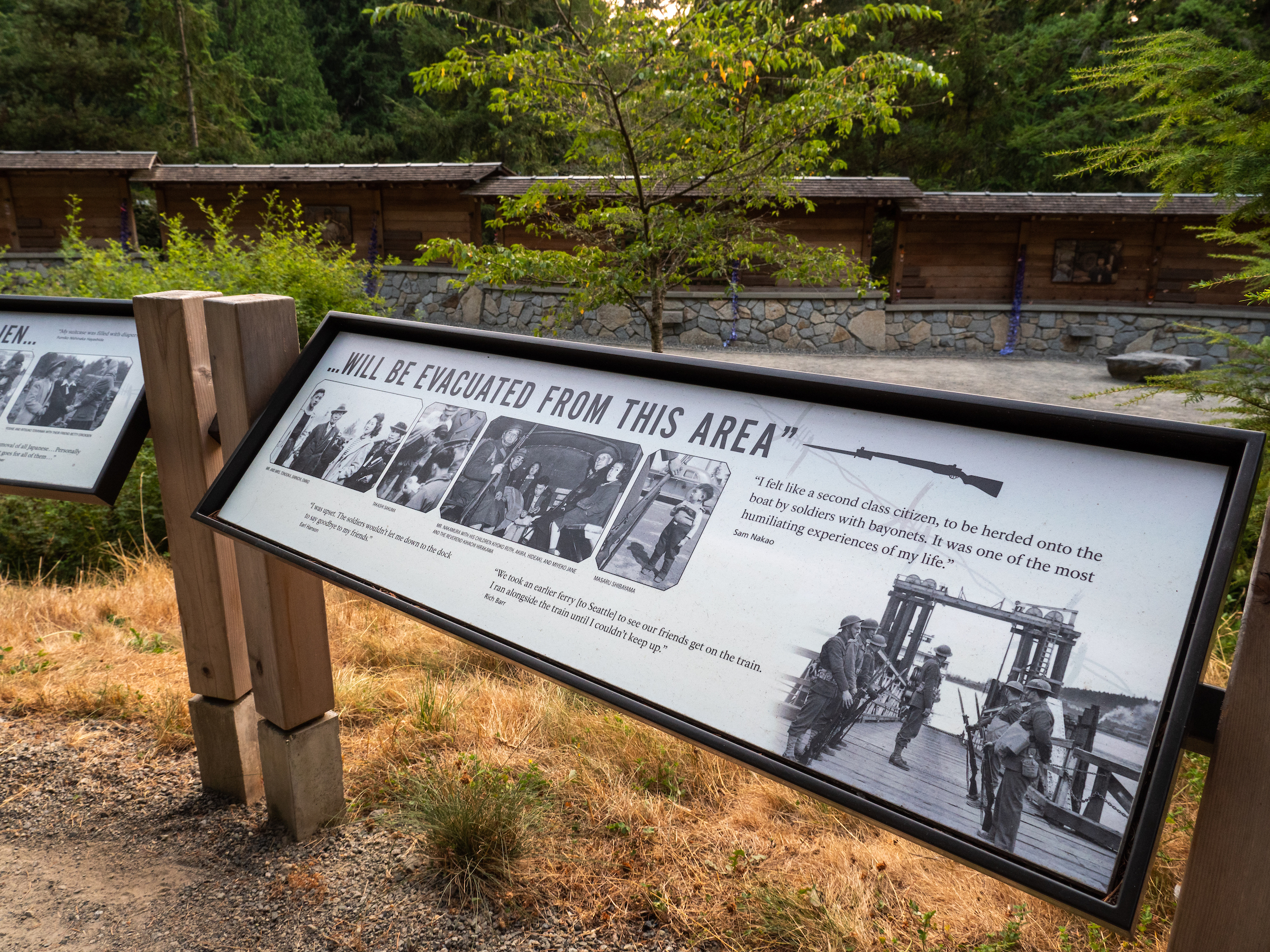
Japanese American Exclusion Memorial Audio Tour - Stop 6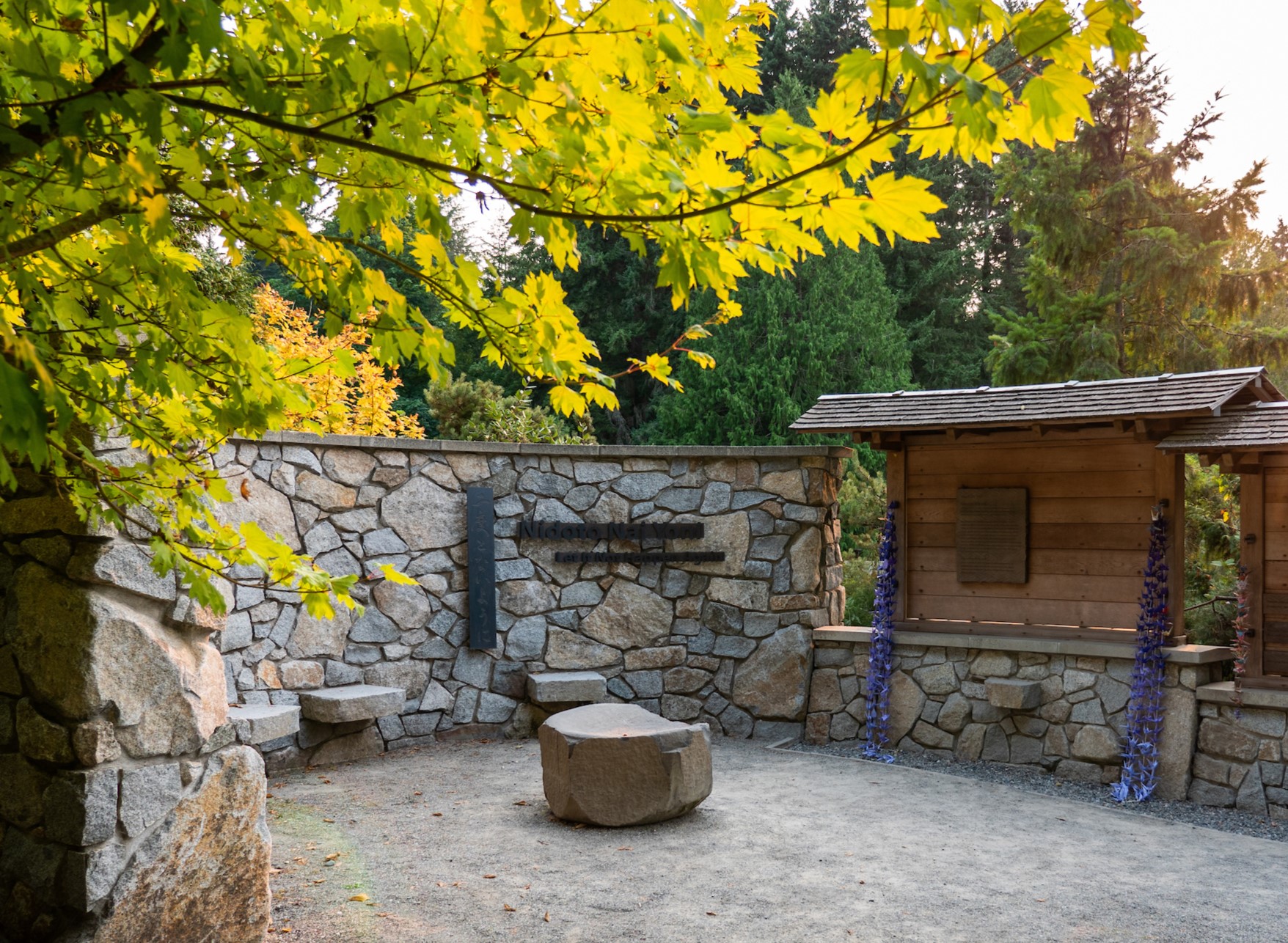
Japanese American Exclusion Memorial Audio Tour - Stop 7
Japanese American Exclusion Memorial Audio Tour - Stop 8
Japanese American Exclusion Memorial Audio Tour - Stop 9
Japanese Cultural & Community Center of Washington (#35)Featuring Northwest Nikkei Museum, includes historical art and artifacts. 
KOBO at Higo (#8)Sanzo and Matsuyo Murakami opened Higo 10 Cents Store here in 1932. Now an artist gallery and store that includes an exhibit about the family’s experience before, during and after WWII. 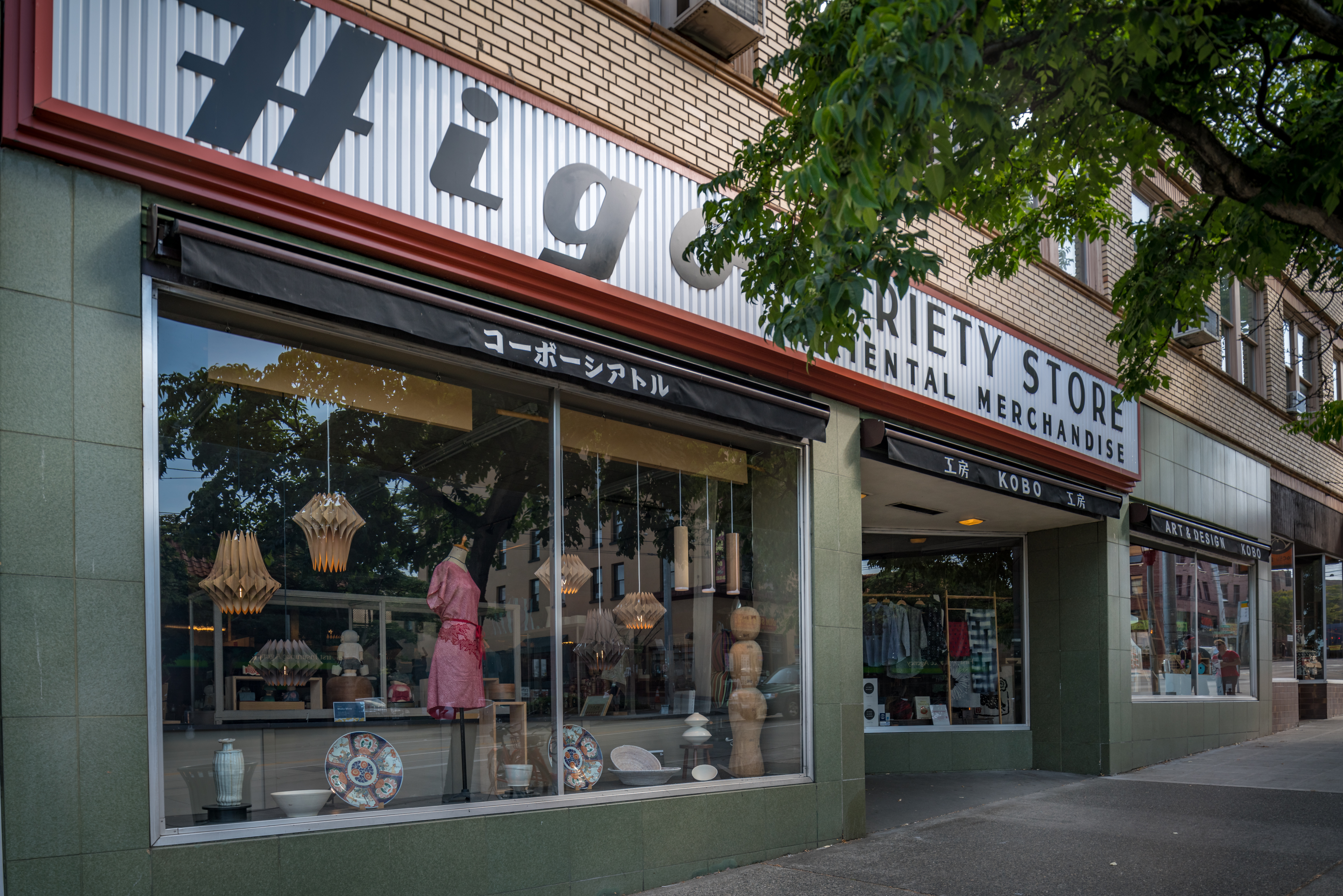
Keiro Rehabilitation & Care Center (#40)Skilled nursing facility started by 7 Nisei (second generation) to meet cultural, social, language and dietary needs of elderly Nikkei. 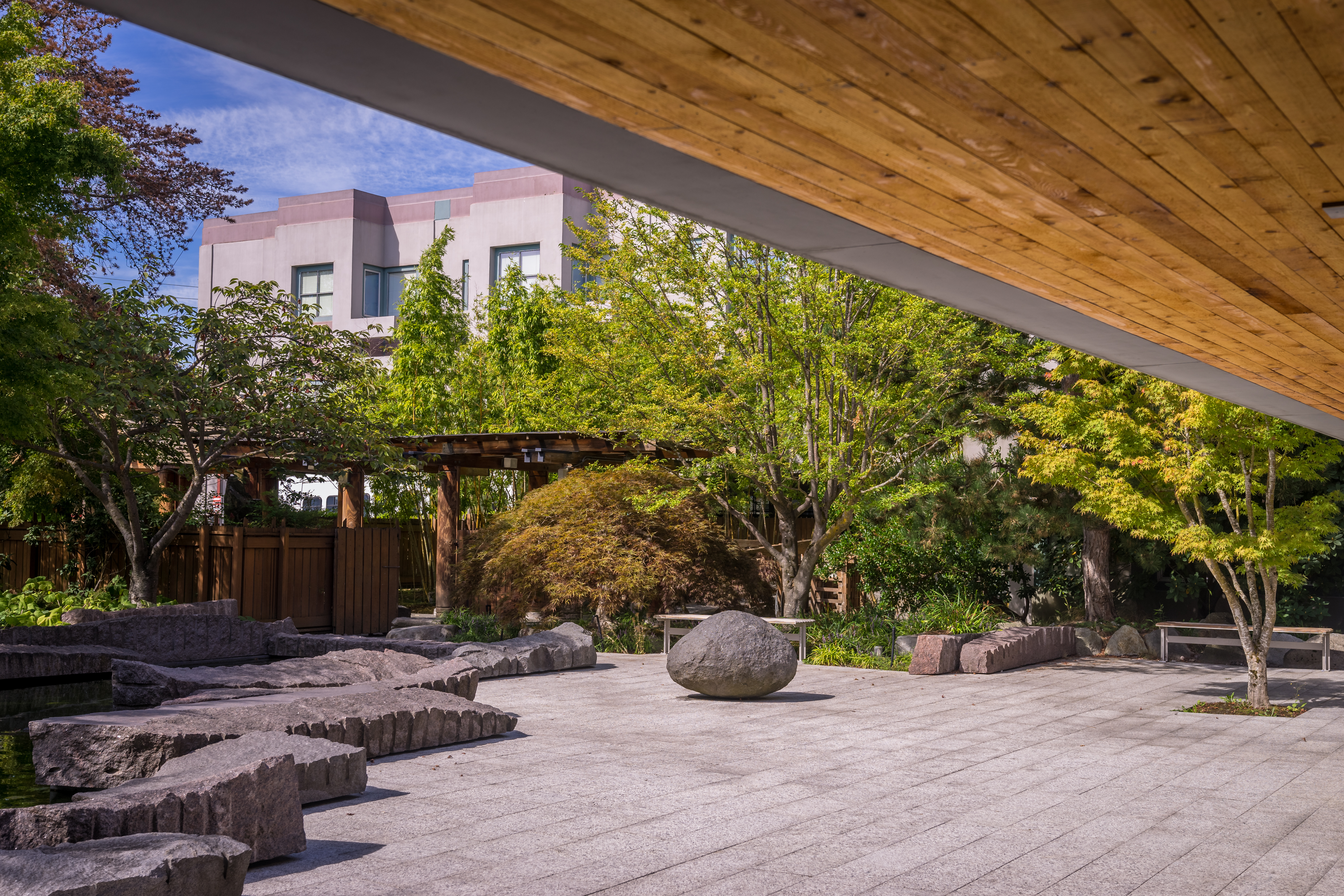
King Street Station (#23)As tensions heightened leading up to WWII, Japanese American porters were replaced by Filipino Americans who wore large “Filipino” identification buttons. 
Kokusai Theater (#2)Samurai movies were popular! 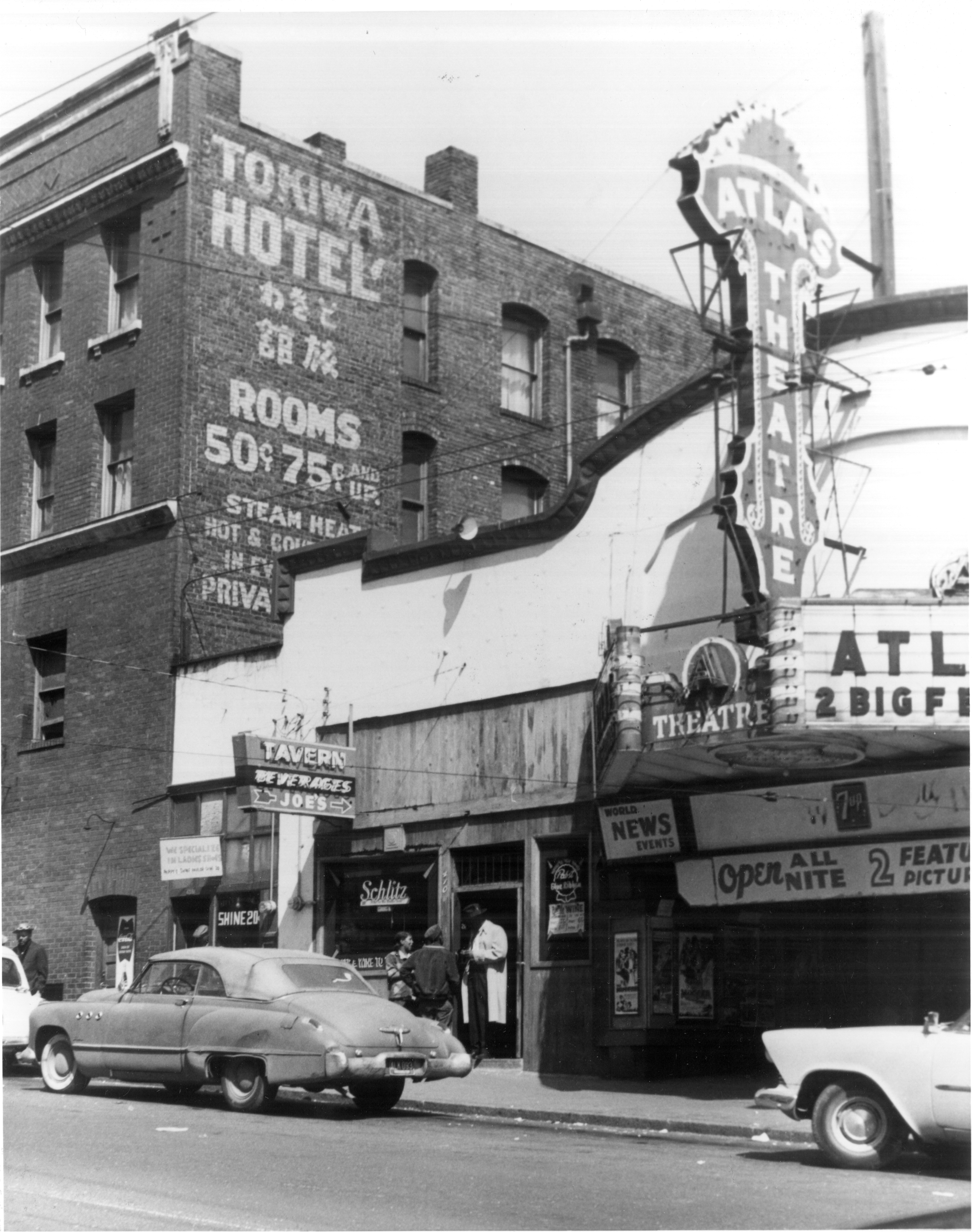
Main Street School Annex (#13)Built around 1906. Served many Asian immigrant children, until December 21, 1921 when students marched up Jackson Street to newly built Bailey Gatzert School. 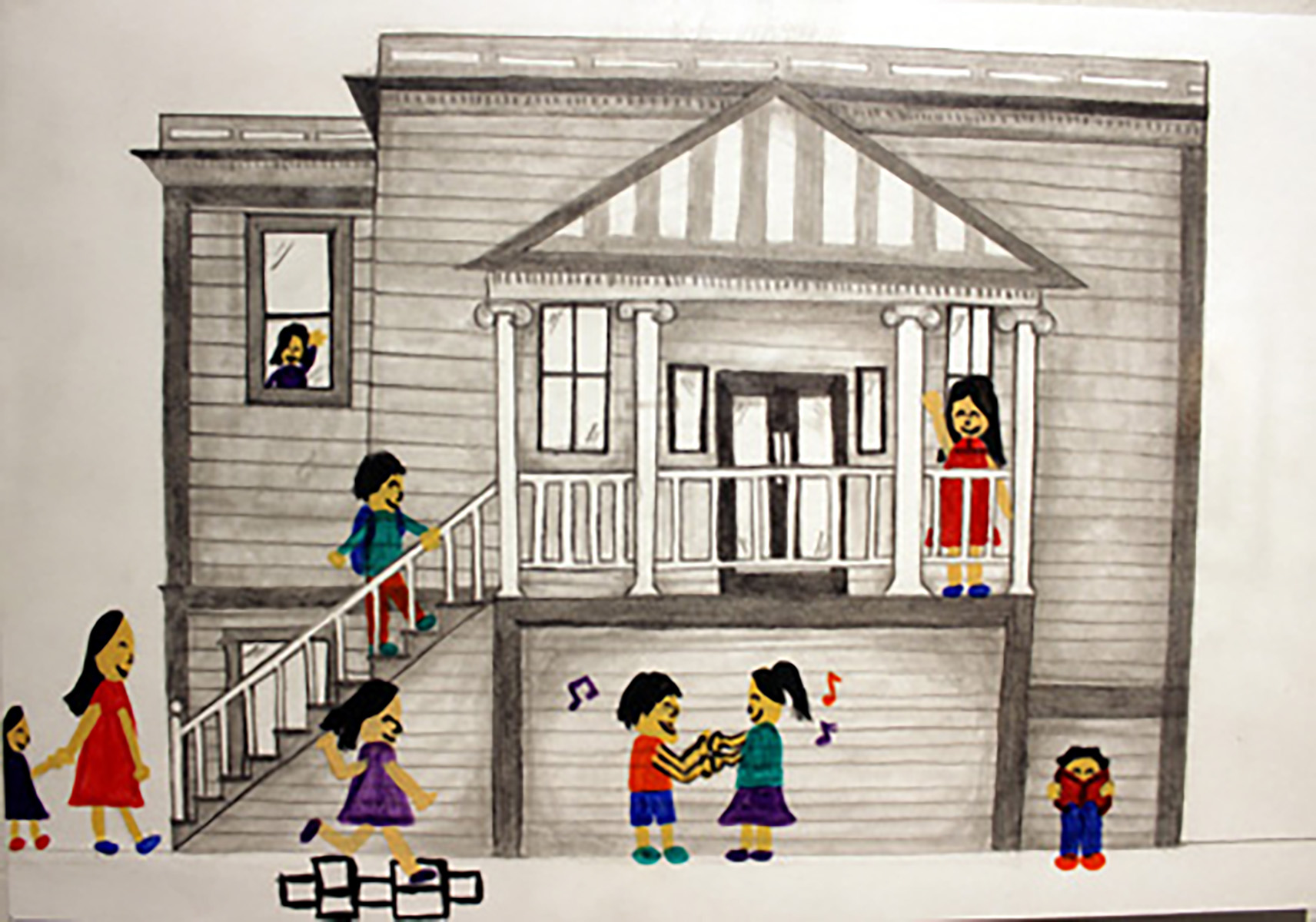
Maneki (#12)Seattle’s first sushi bar. Over 100 years old, named one of “America’s Classics” by the James Beard Foundation. 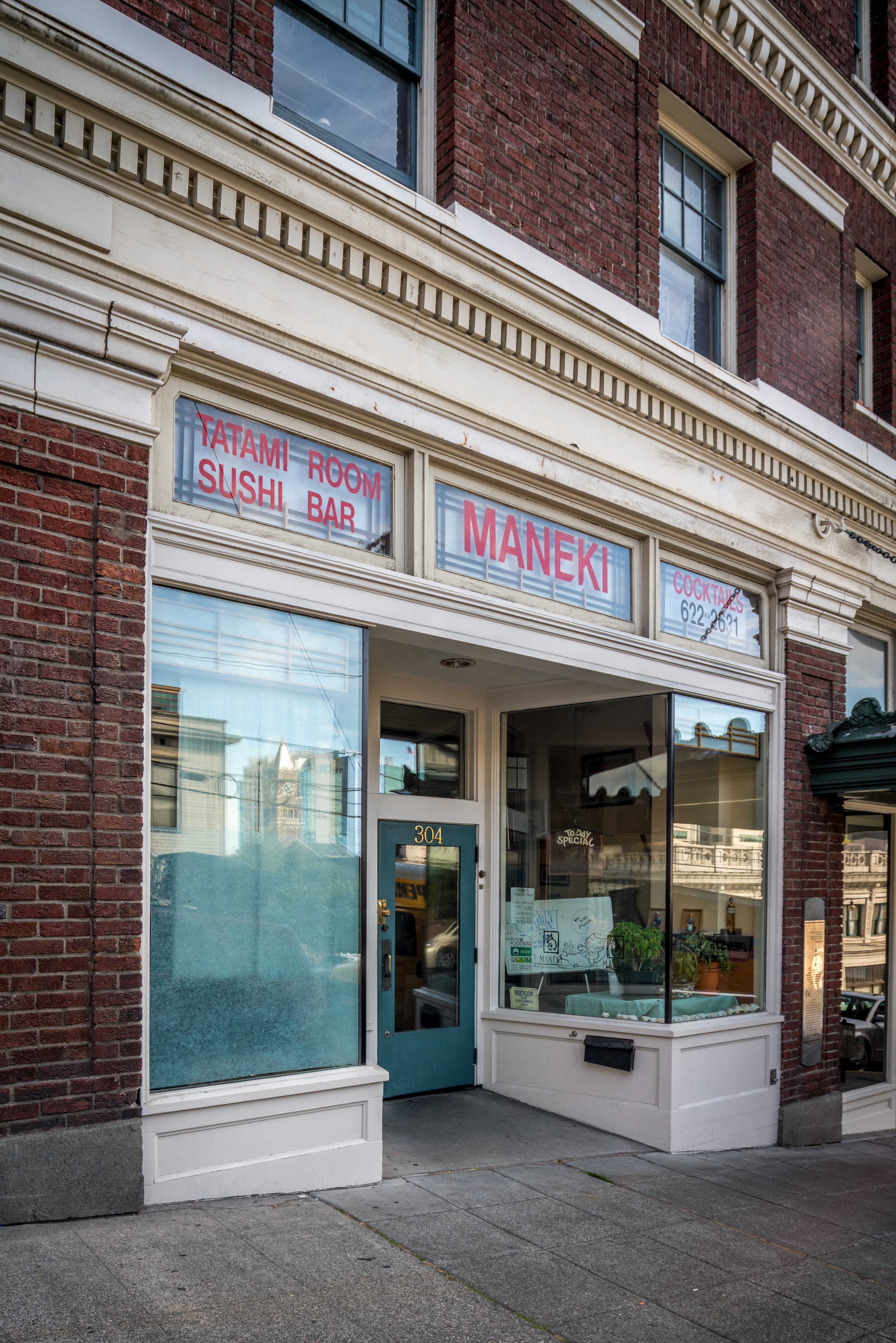
Maritime Washington National Heritage AreaThe Maritime Washington National Heritage Area tells a nationally important story of maritime heritage, from Native American canoe cultures to industrial working waterfronts, that shaped western Washington and contributes today to our development as a nation. 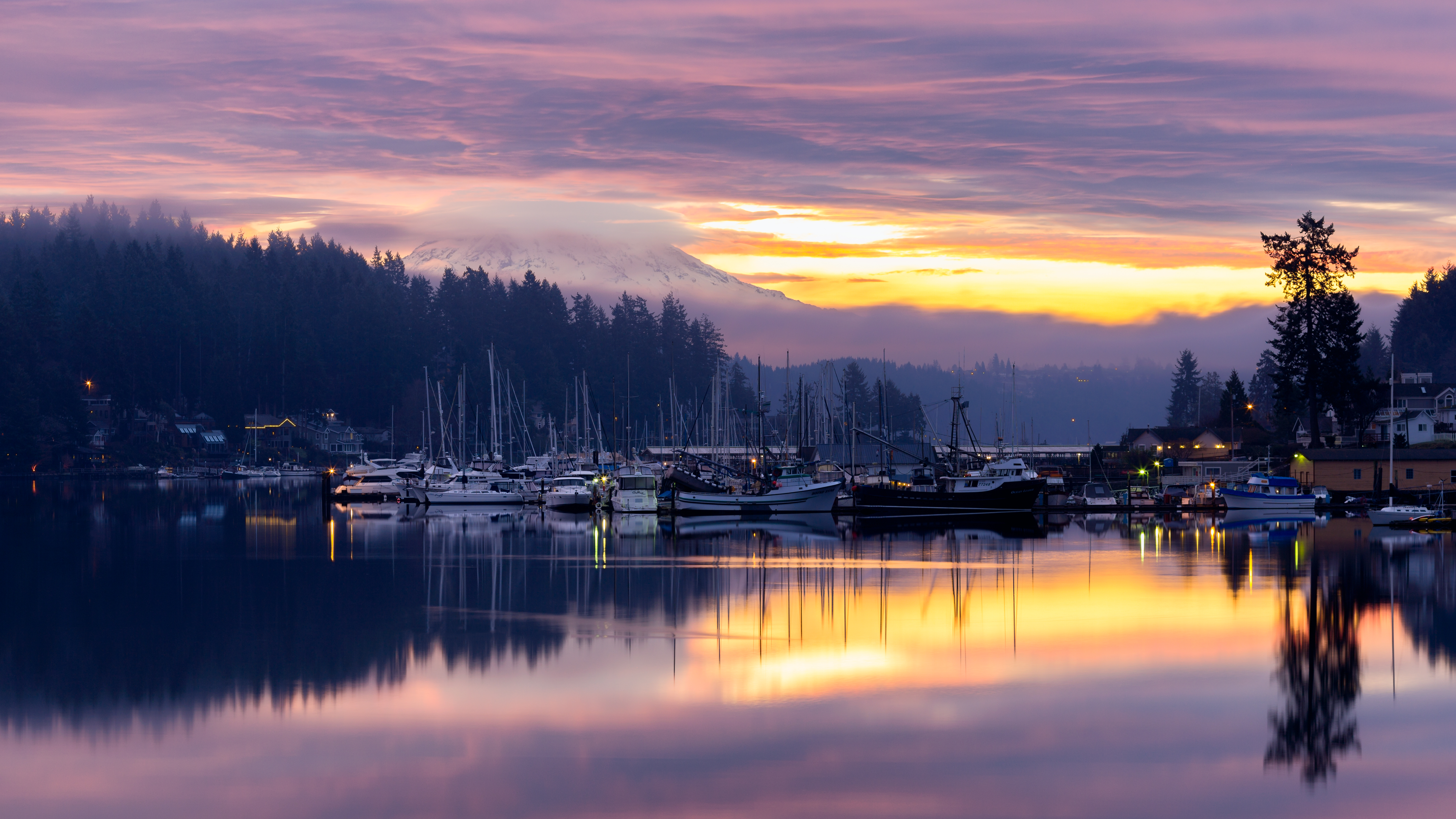
Maynard Ave Green Street (#4)Design honors the Japanese American experience. 
Mountains to Sound Greenway National Heritage AreaThe Mountains to Sound Greenway National Heritage Area is a scenic, historic, transportation and conservation corridor in the Pacific Northwest region of the United States. 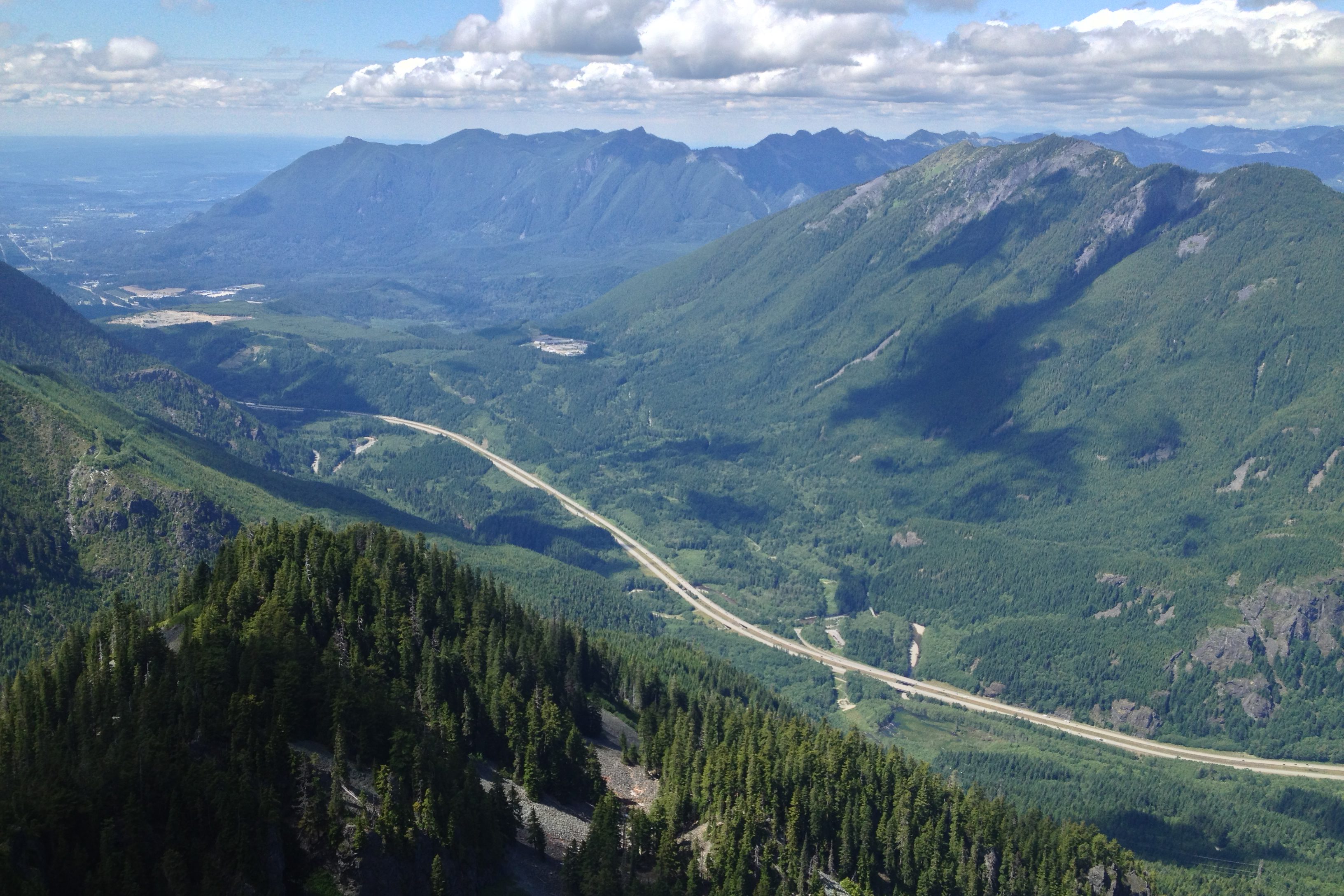
N.P. Hotel (#11)Built in 1914. Visiting dignitaries and baseball teams from Japan usually stayed at this hotel. 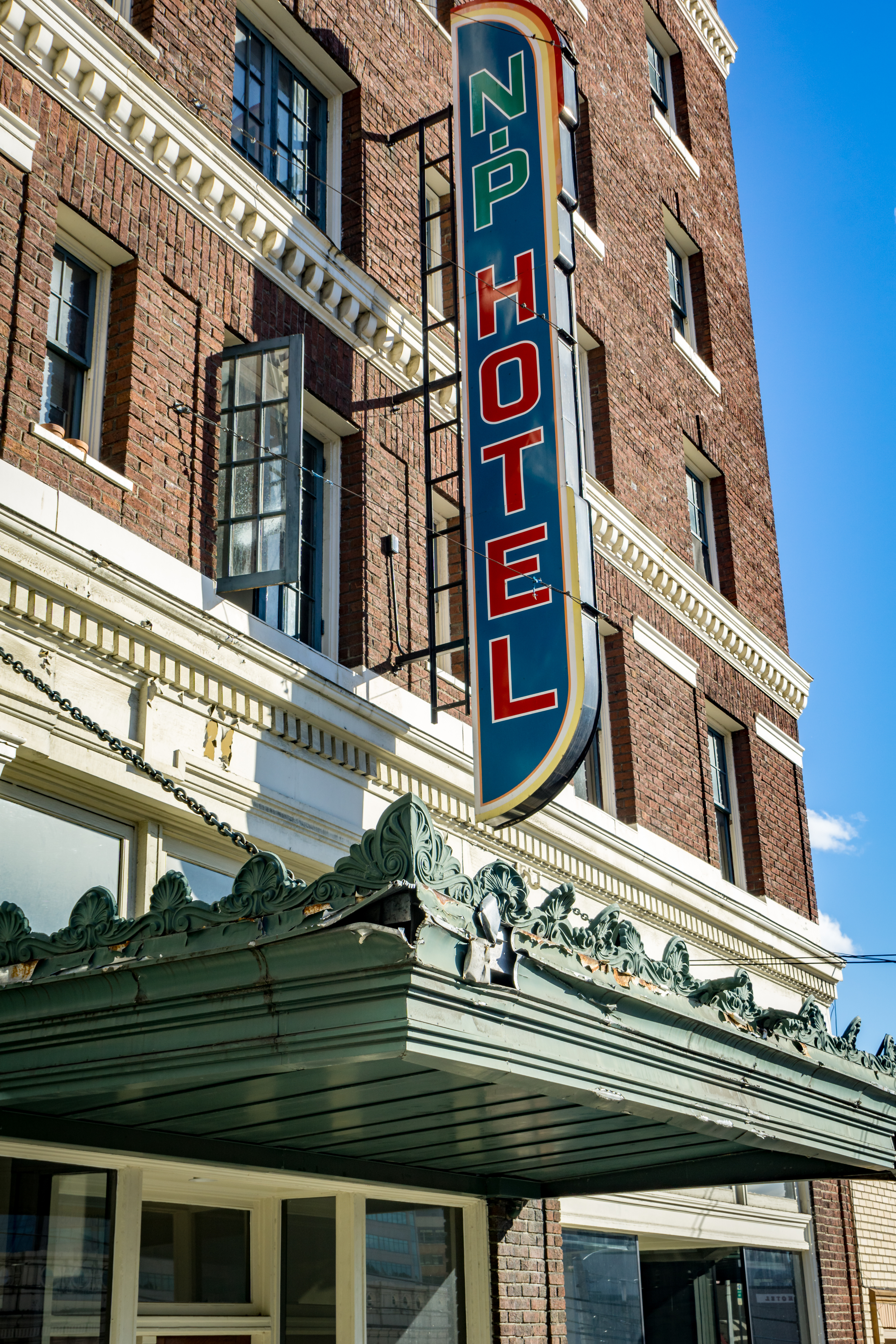
Nagomi Tea House (#24)Spotlights a traditional Japanese Chashitsu tea house. 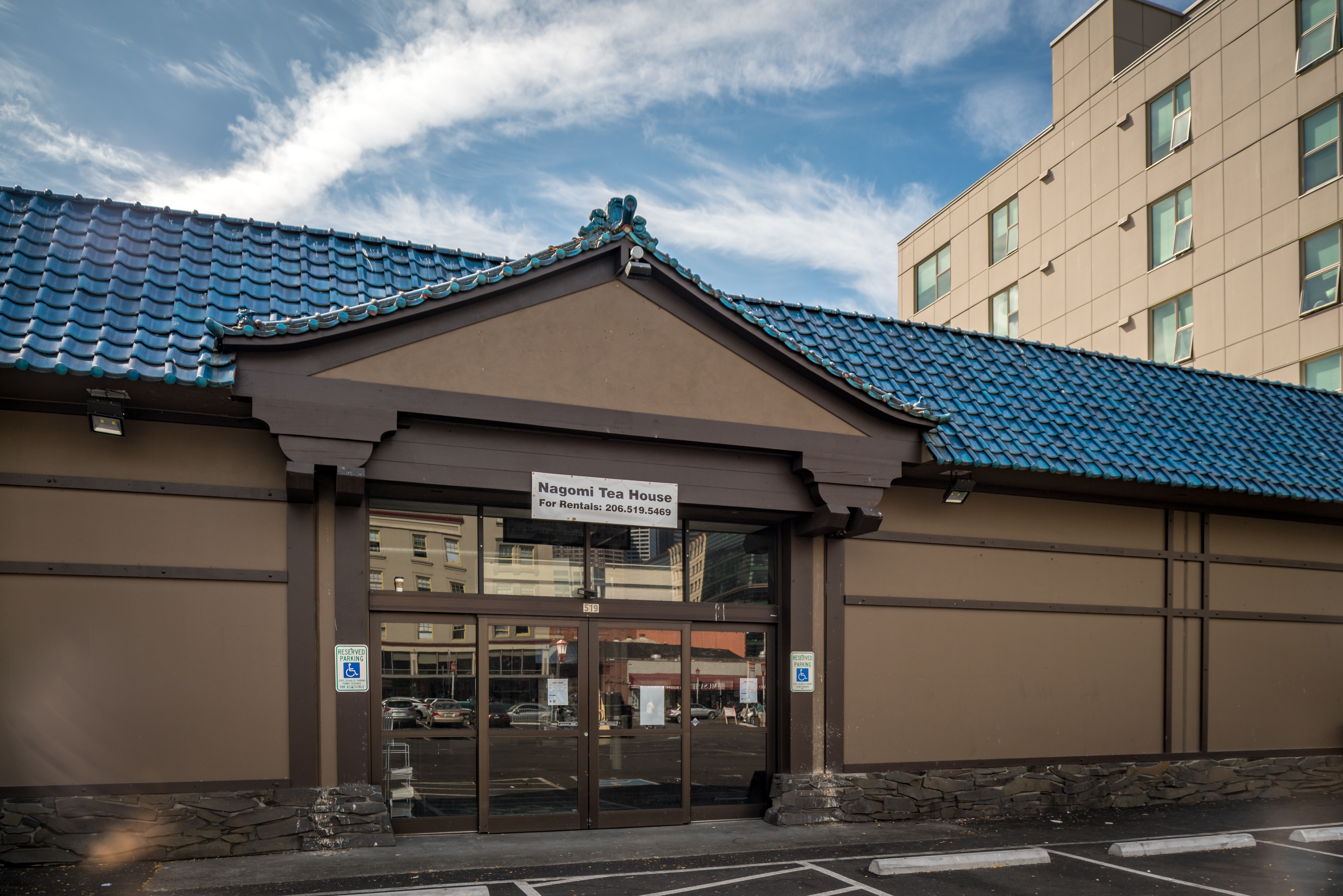
Nichiren Buddhist Church (#32)Designed by Kichio Allen Arai in 1928. Approximately 300 people attended the elaborate 2-day inaugural ceremony. 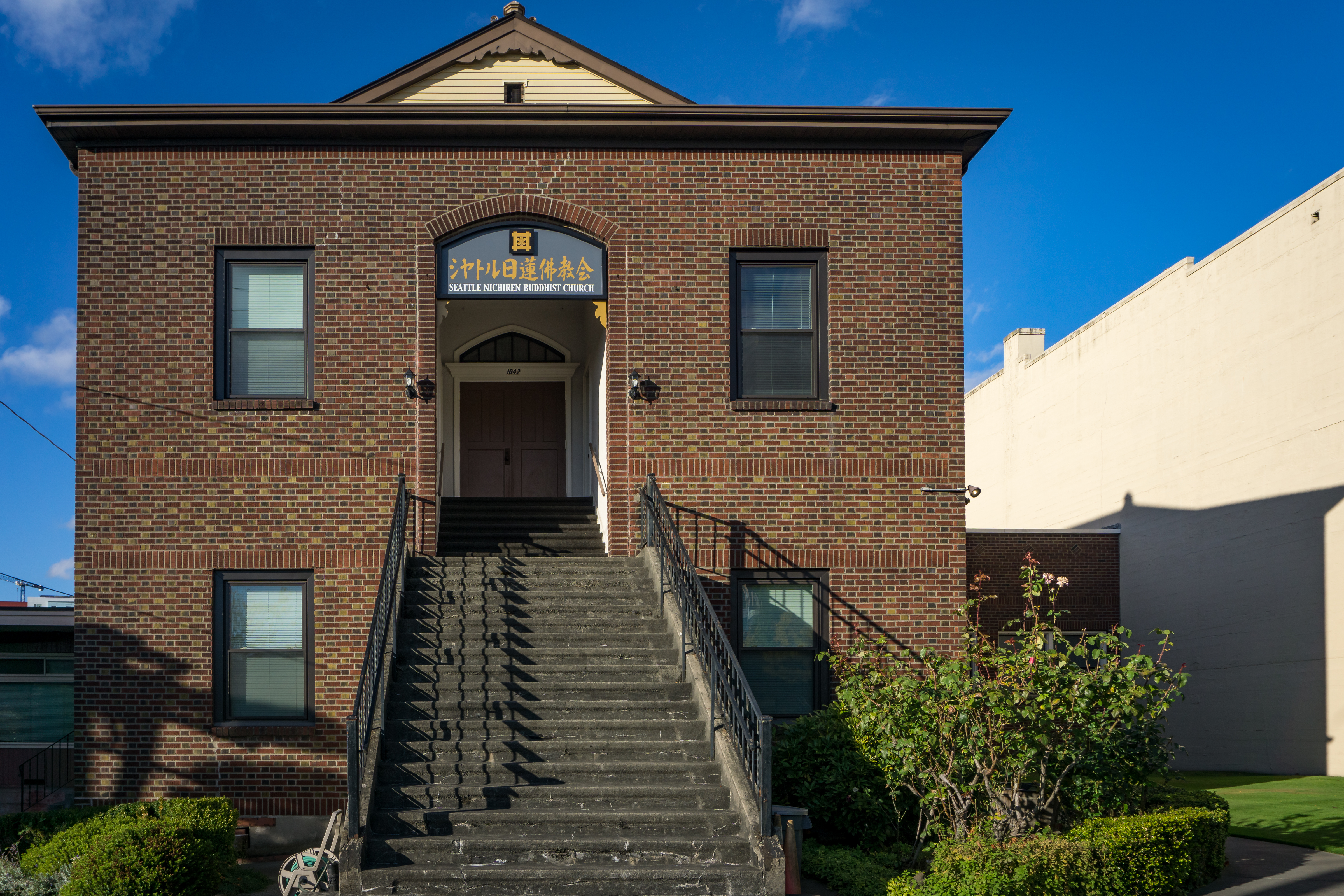
Nihonmachi Alley (#5)Artwork by Amy Nikaitani about 4 businesses – Kokusai Theater, Maneki, Uwajimaya and Sagamiya Confectionary – alongside artwork by Erin Shigaki as part of her “Never Again Is Now” series. 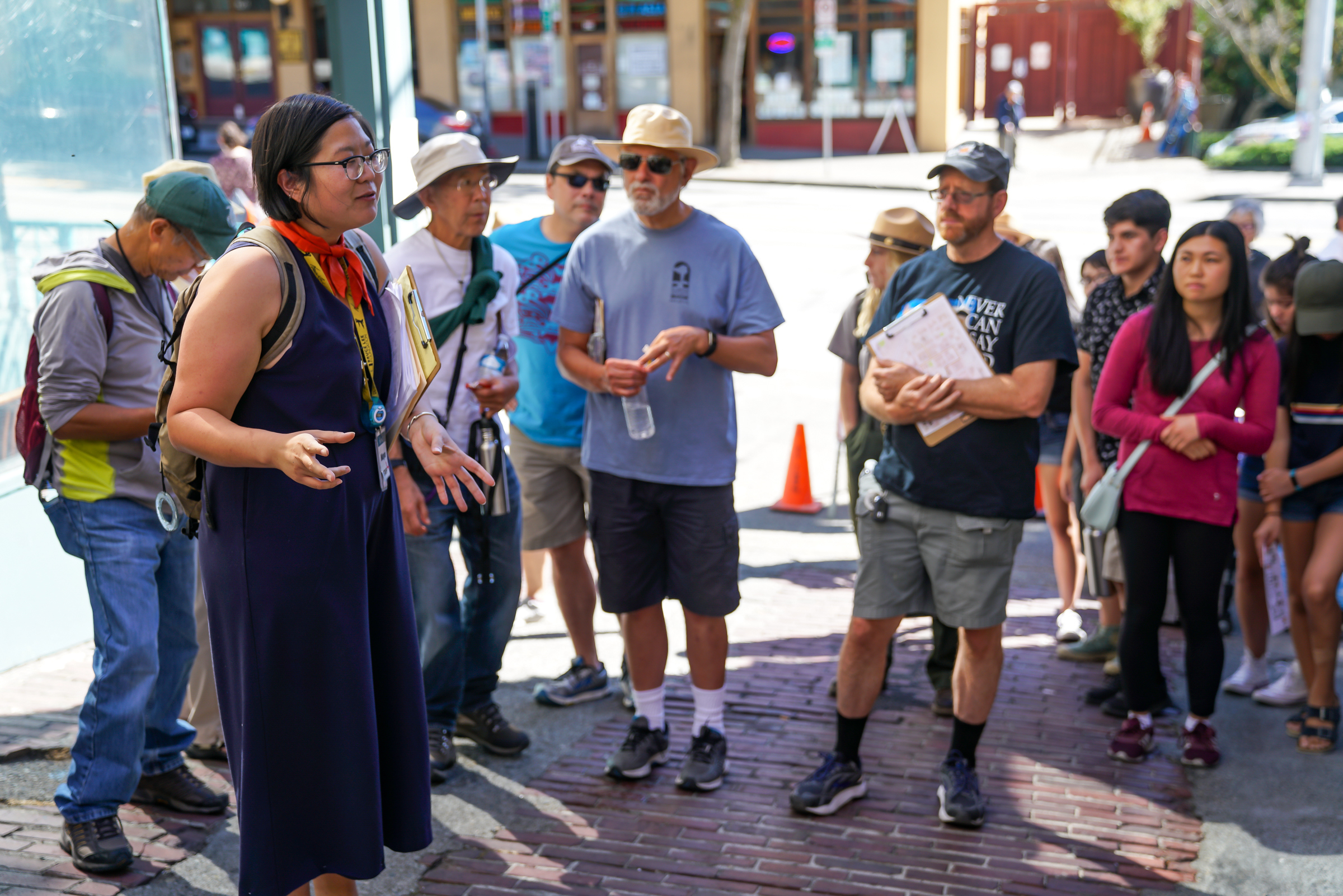
Nikkei Manor (#29)Opened in 1998, this assisted living facility includes a therapeutic garden. 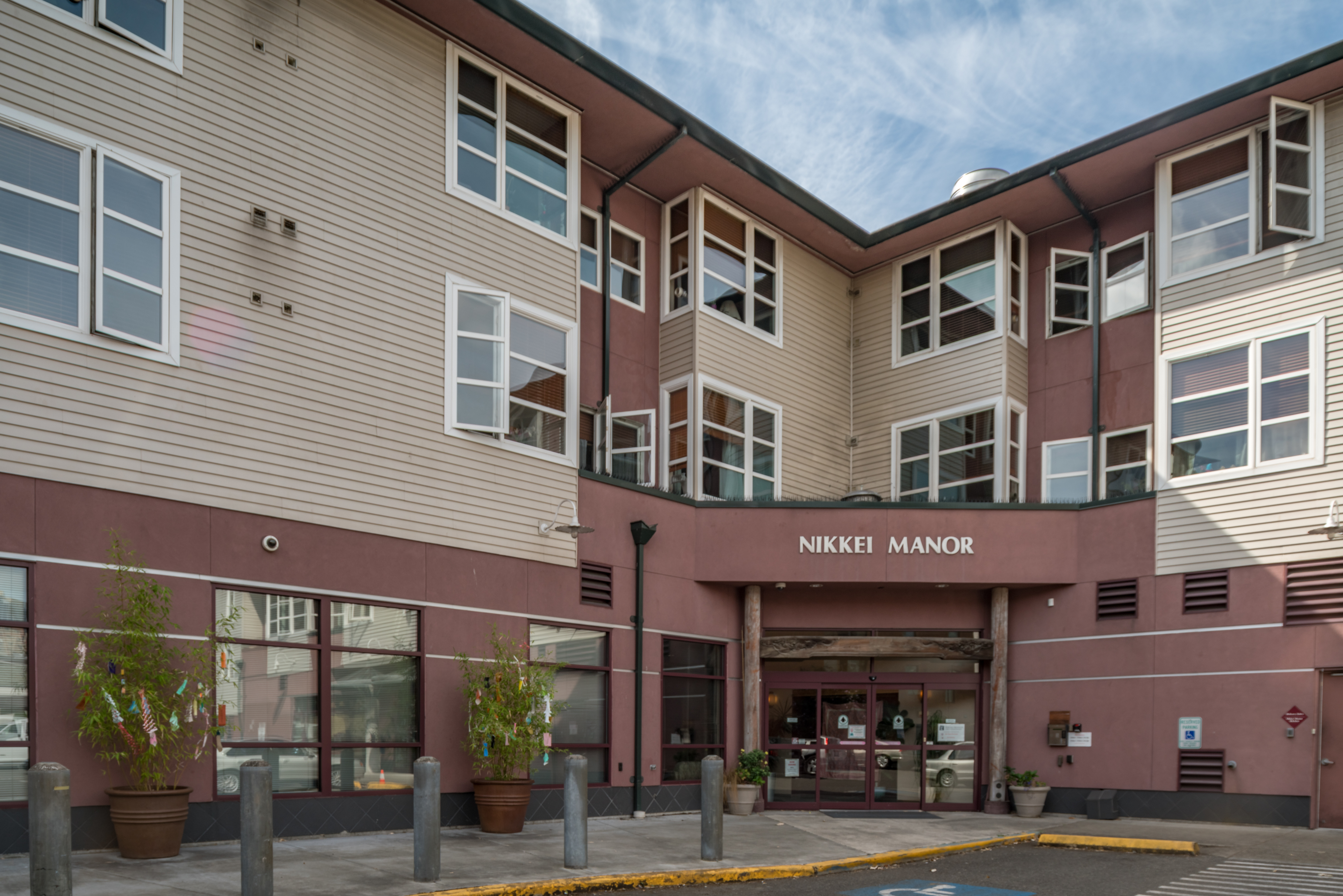
Nippon Kan (#17)Built in 1909, this former Japanese theater hosted international stars of traditional performances along with local dance groups. 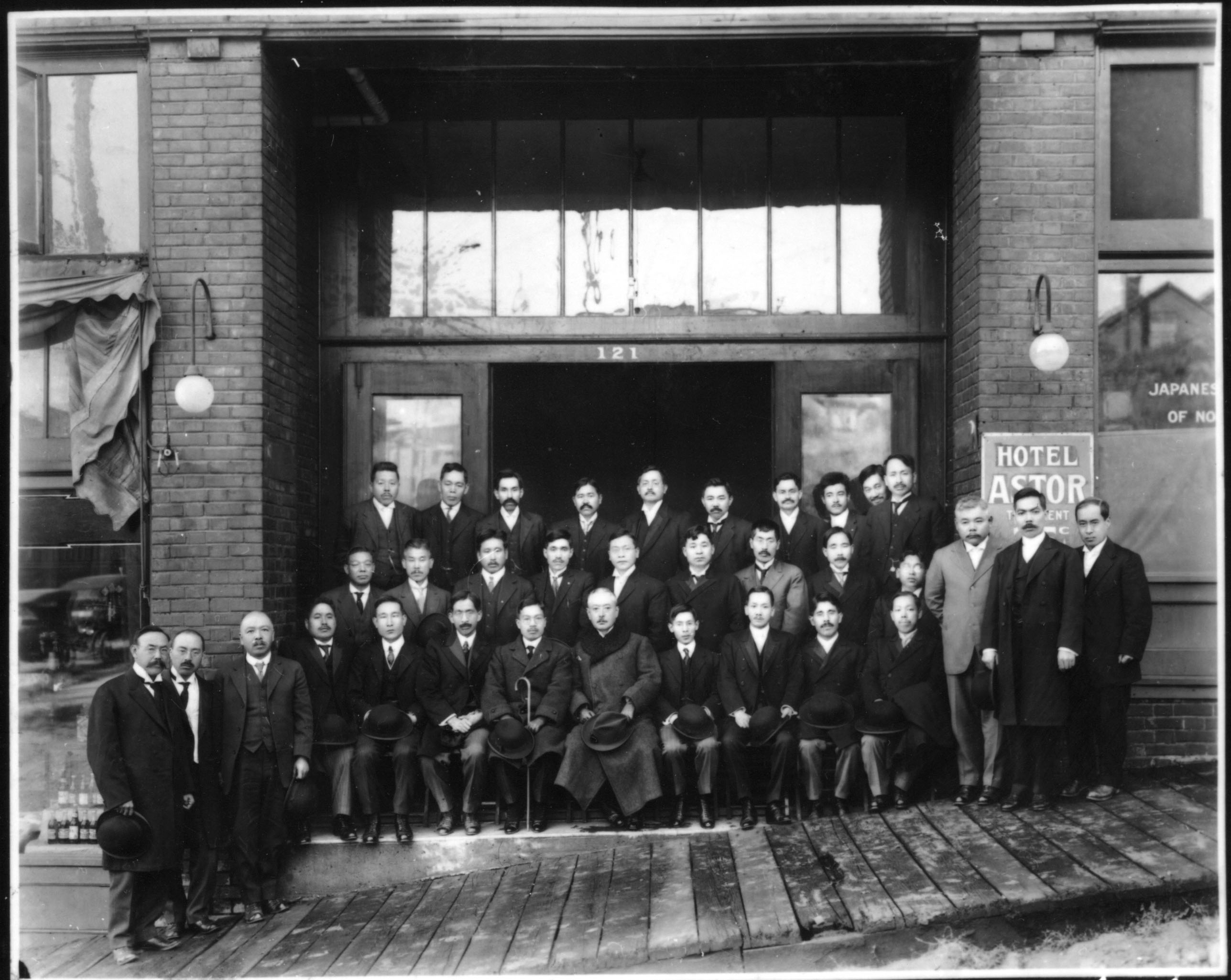
Nisei Veterans Committee Hall (#34)Built in 1938 as dojo for the Kendo Kai, who transferred it to the NVC in 1951. Outdoor memorial wall honors veterans and WWII incarcerees. 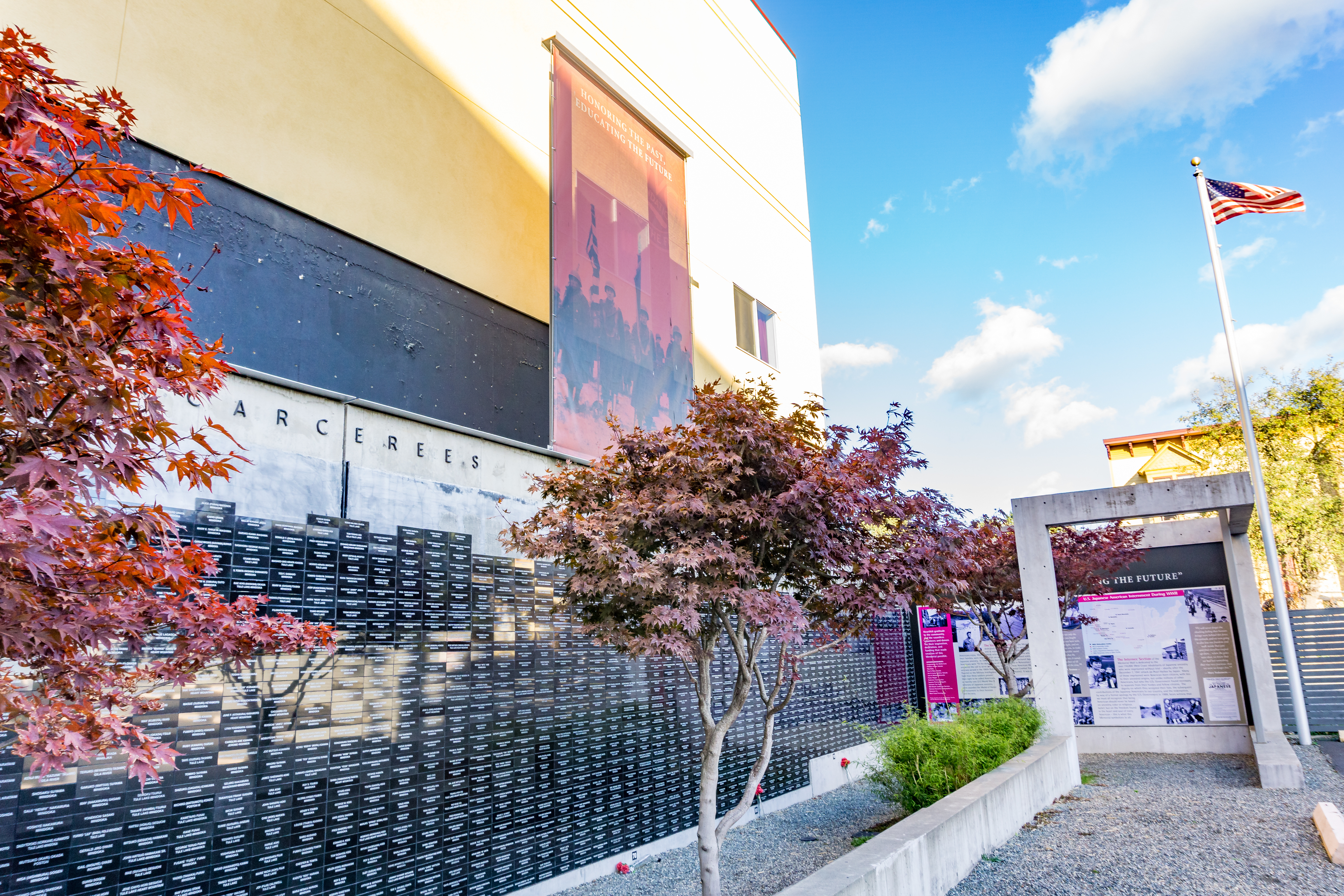
North American Post (#25)Oldest Japanese-language newspaper published in the Pacific Northwest. 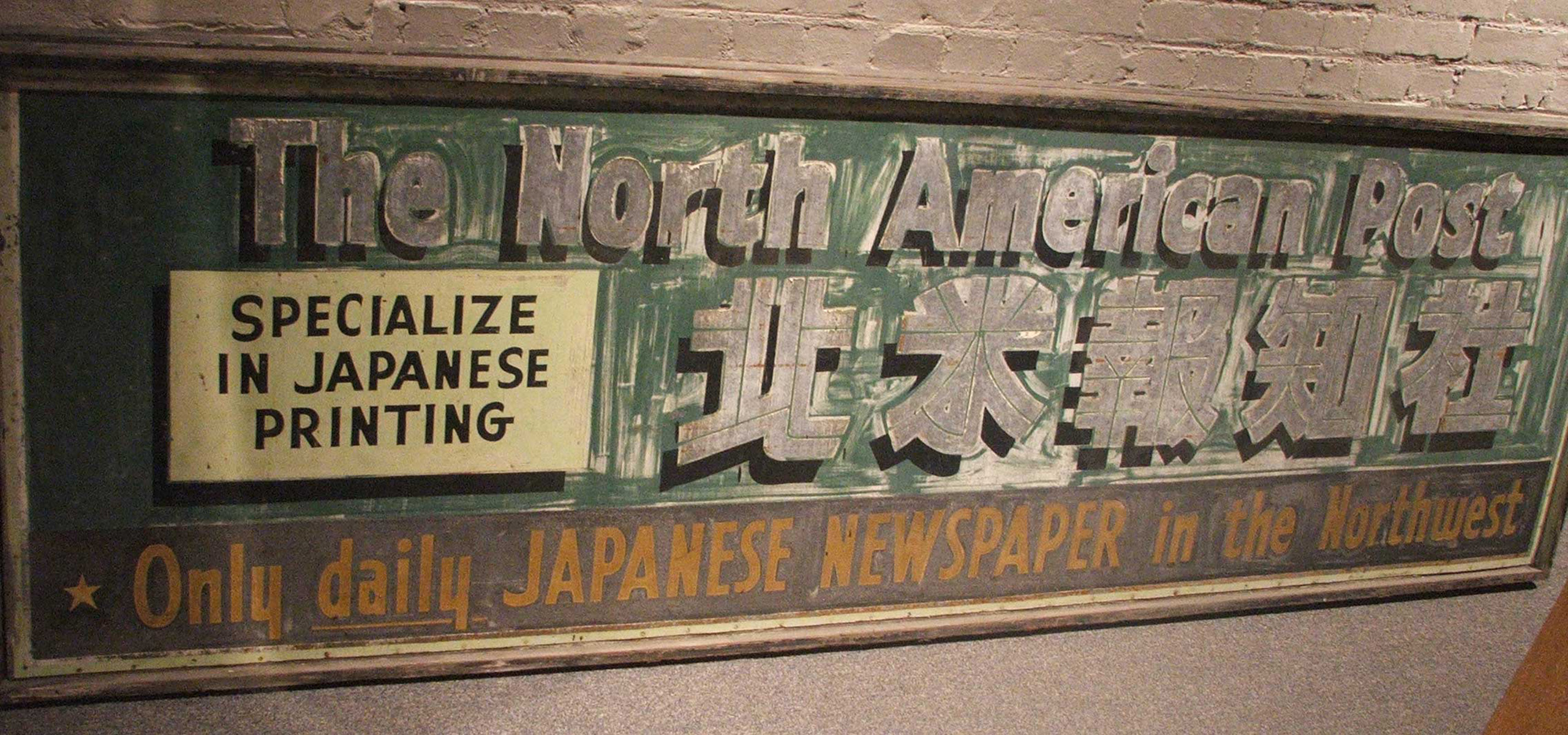
Outdoor Recreation Information Center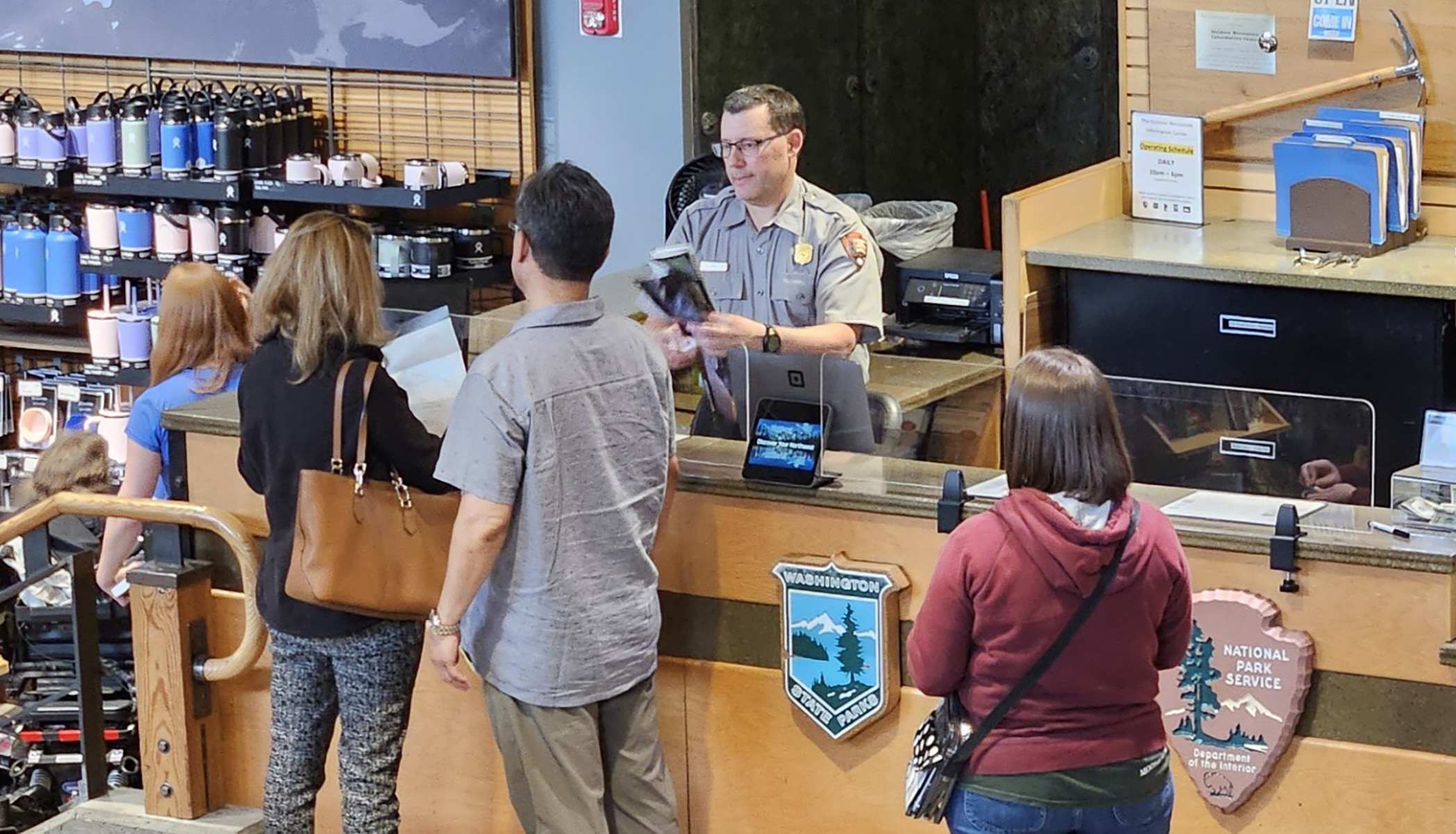
Panama Hotel (#15)Built in 1910 by architect Sabro Ozasa. Japanese American families stored their personal belongings here during the WWII incarceration. Many of the trunks and suitcases are on view in the Hotel’s Tea & Coffee House. 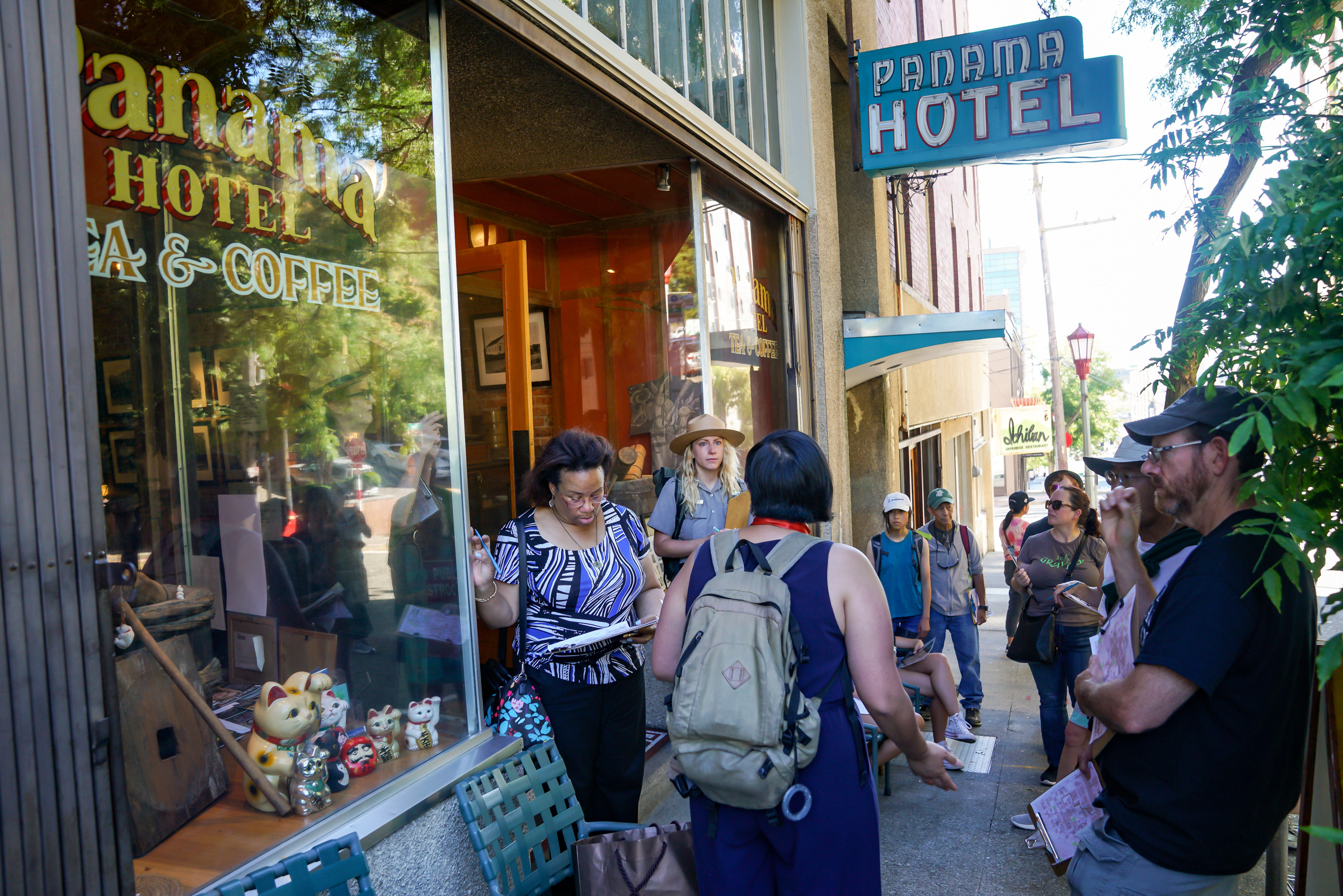
Panama Hotel Sento (#14)New gate marks entrance to communal bathhouse, the only one preserved intact in the US. Served many Nikkei before WWII, who came to soak in the baths after school, dinner and sports. 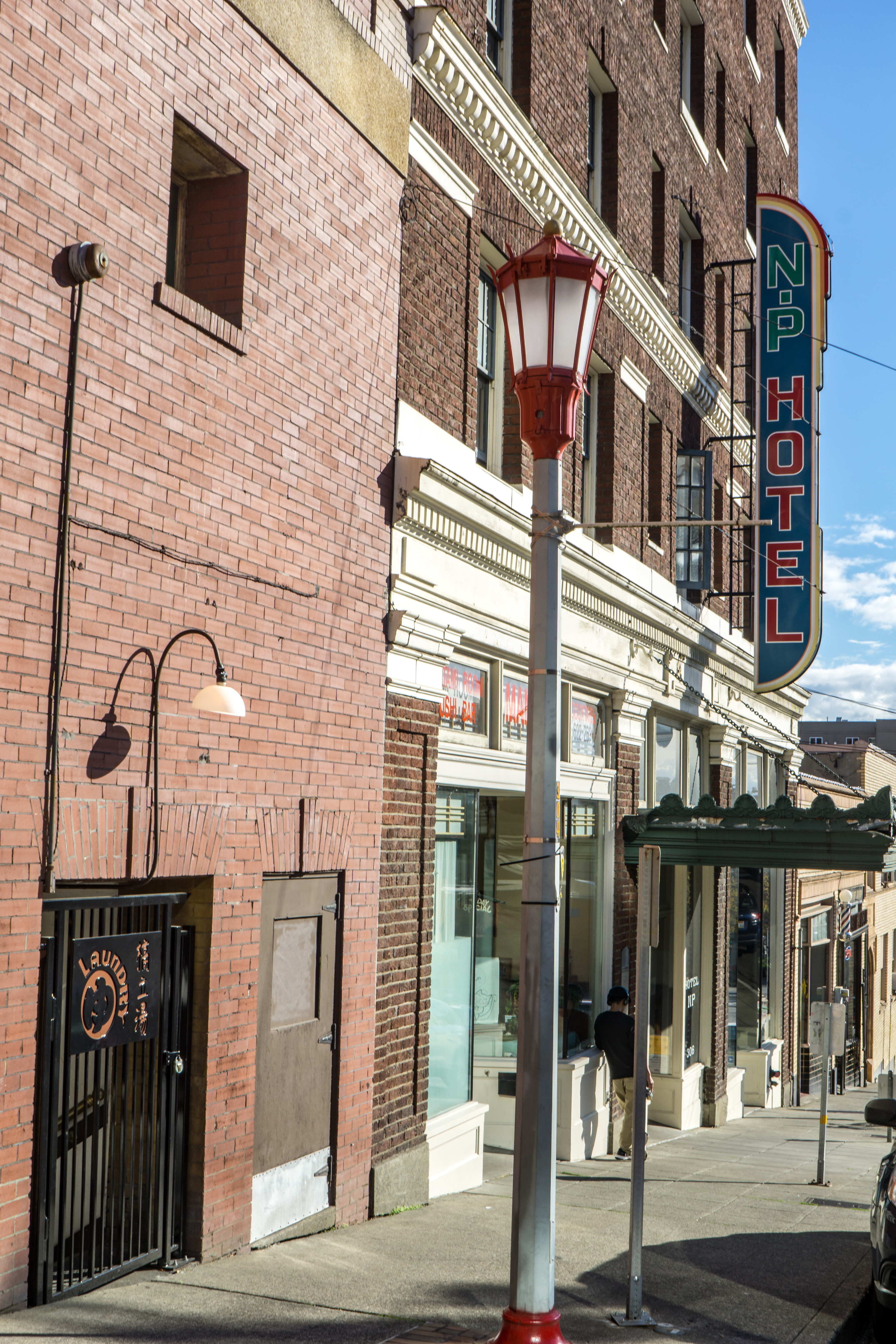
Puget Sound Hotel (#28)When WA State law forbade Japanese immigrants from purchasing land, a Jewish attorney bought the property for the Nishimura family. Once the second largest hotel in Seattle with 444 rooms. 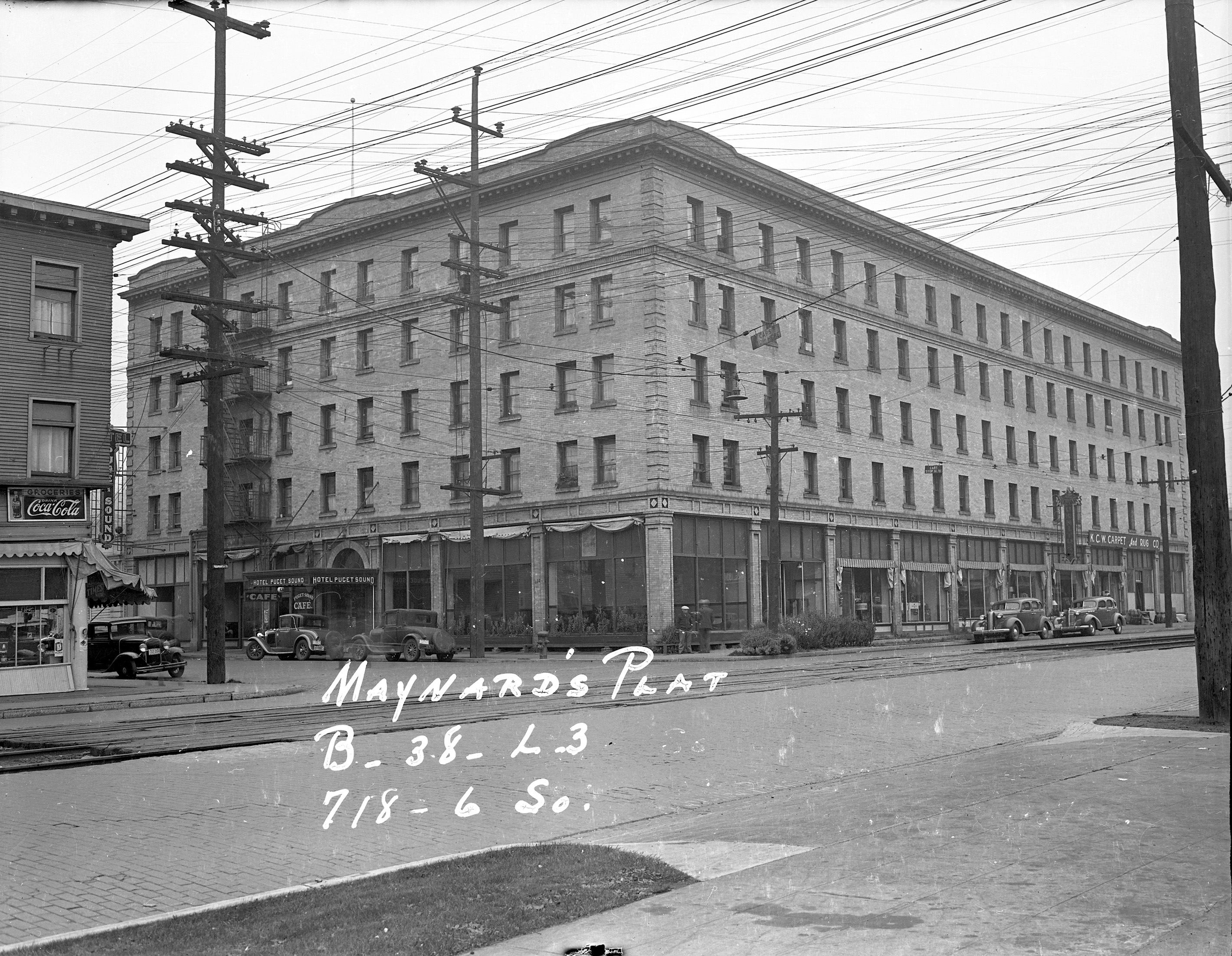
|
| Visitor Centers | Count: 3
Bainbridge Island Japanese American Exclusion Memorial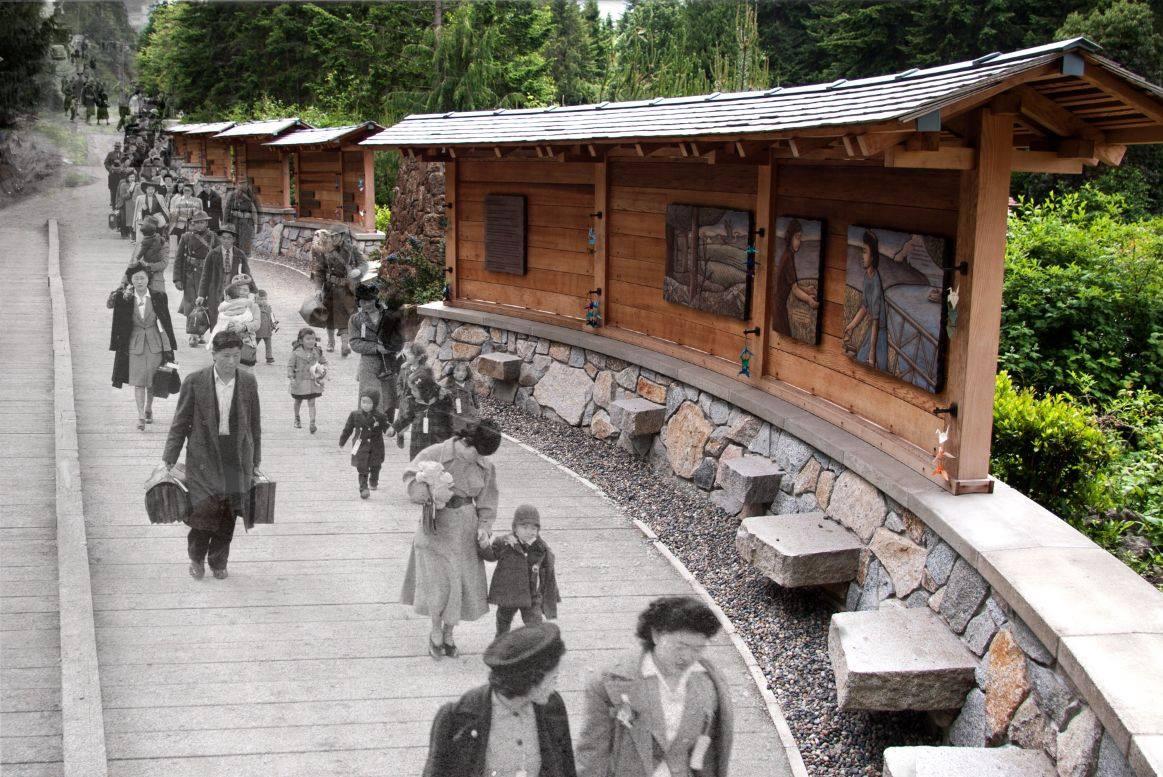
Klondike Gold Rush Visitor Center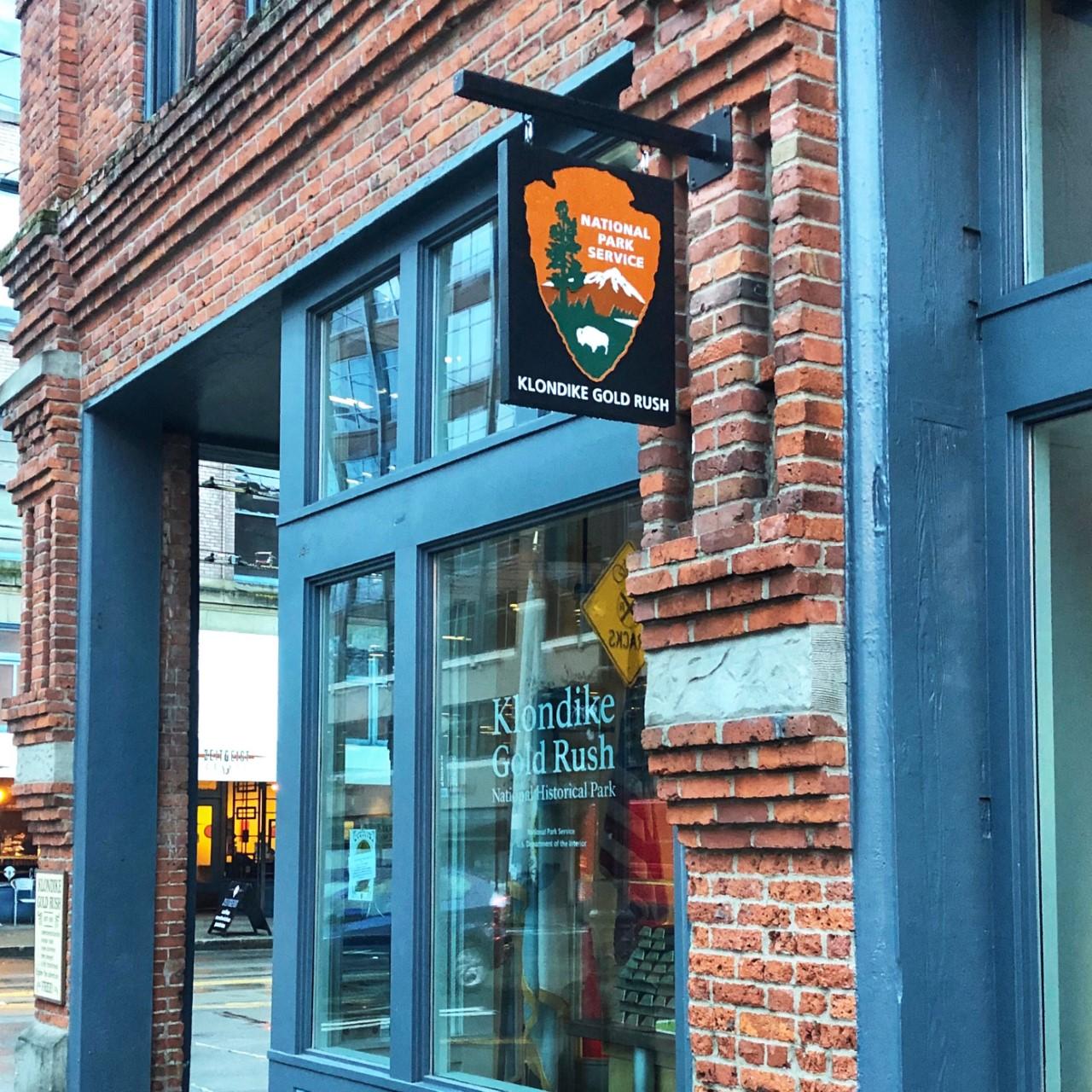
Outdoor Recreation Information Center (ranger station at REI)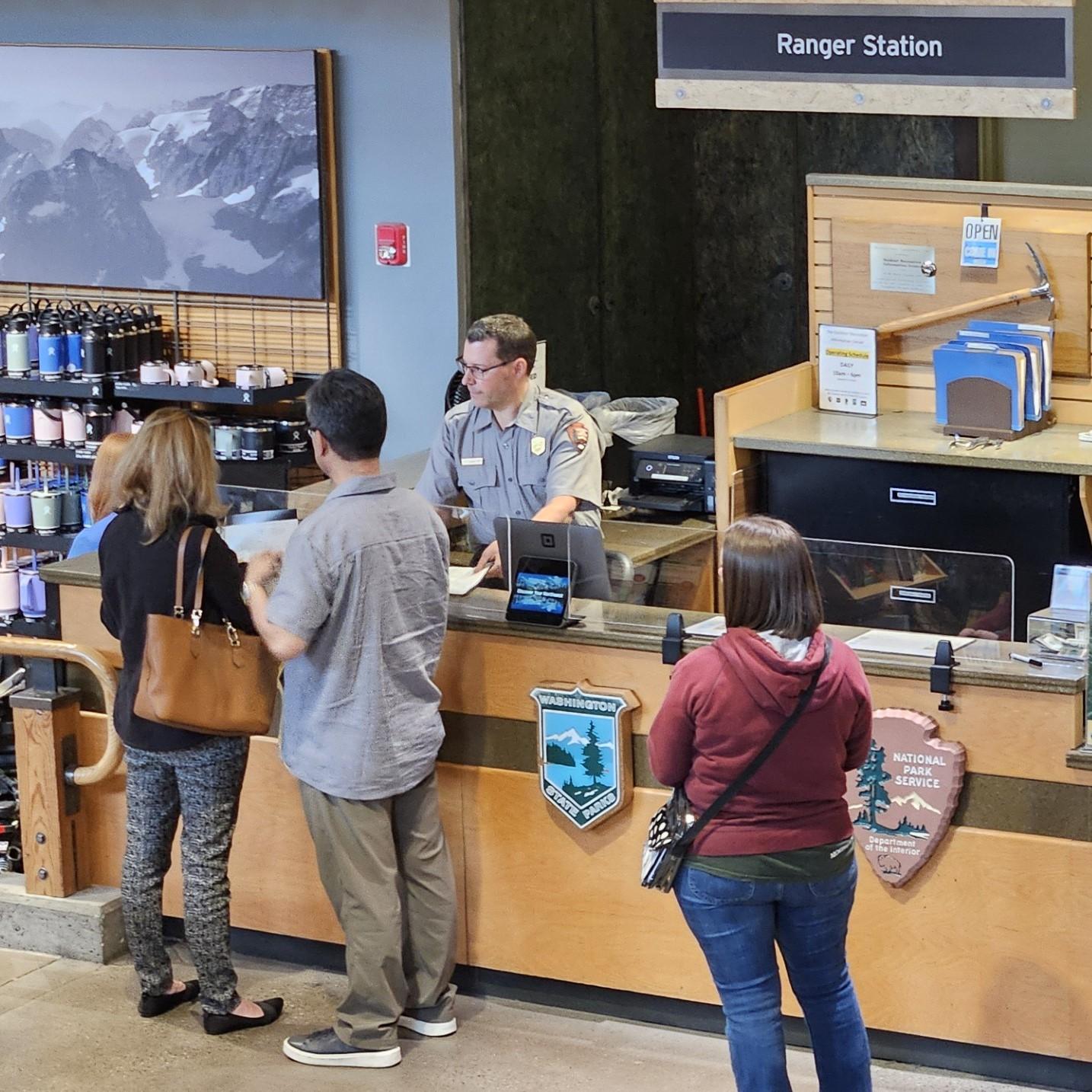
|
| Things to do | Count: 5
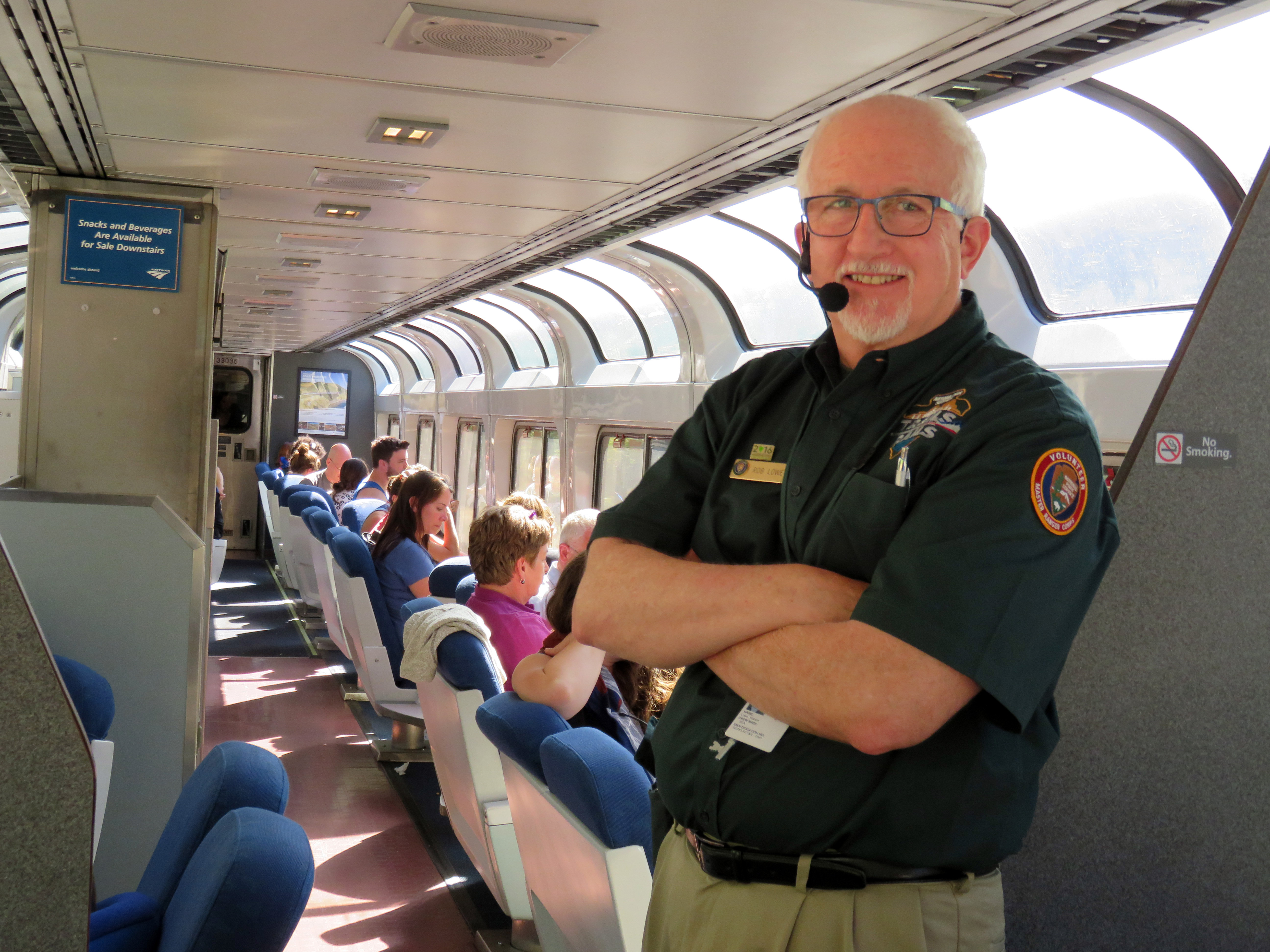
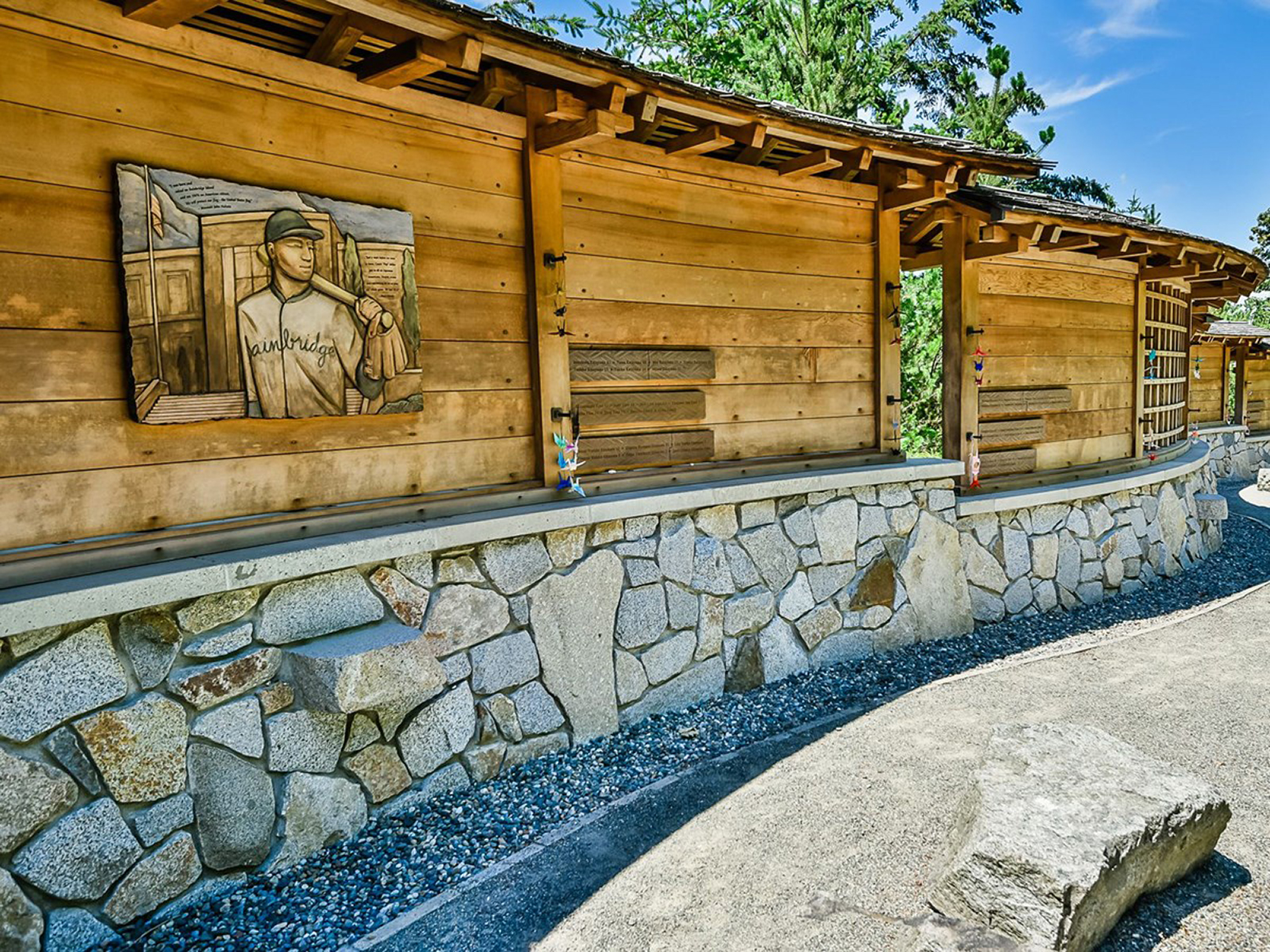
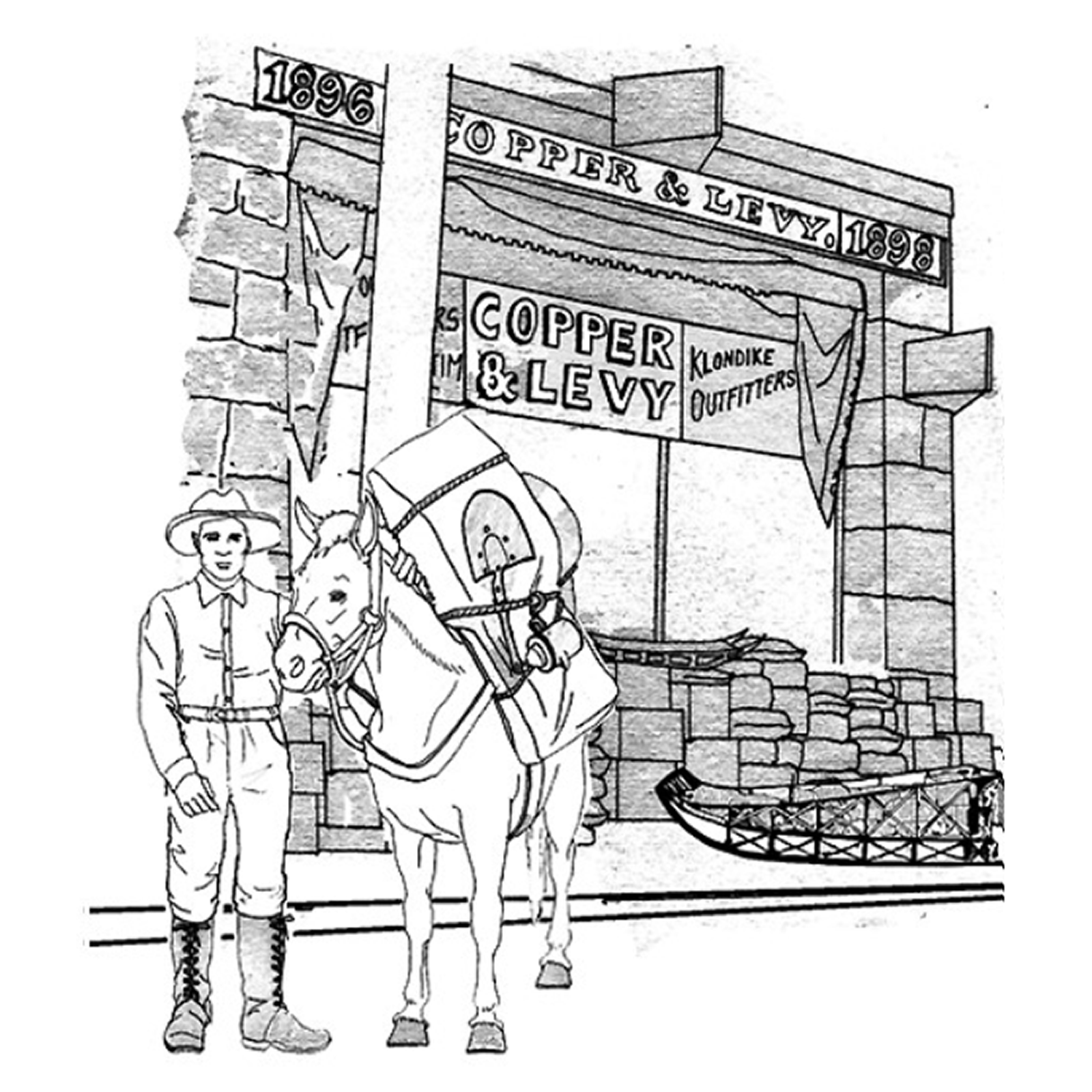
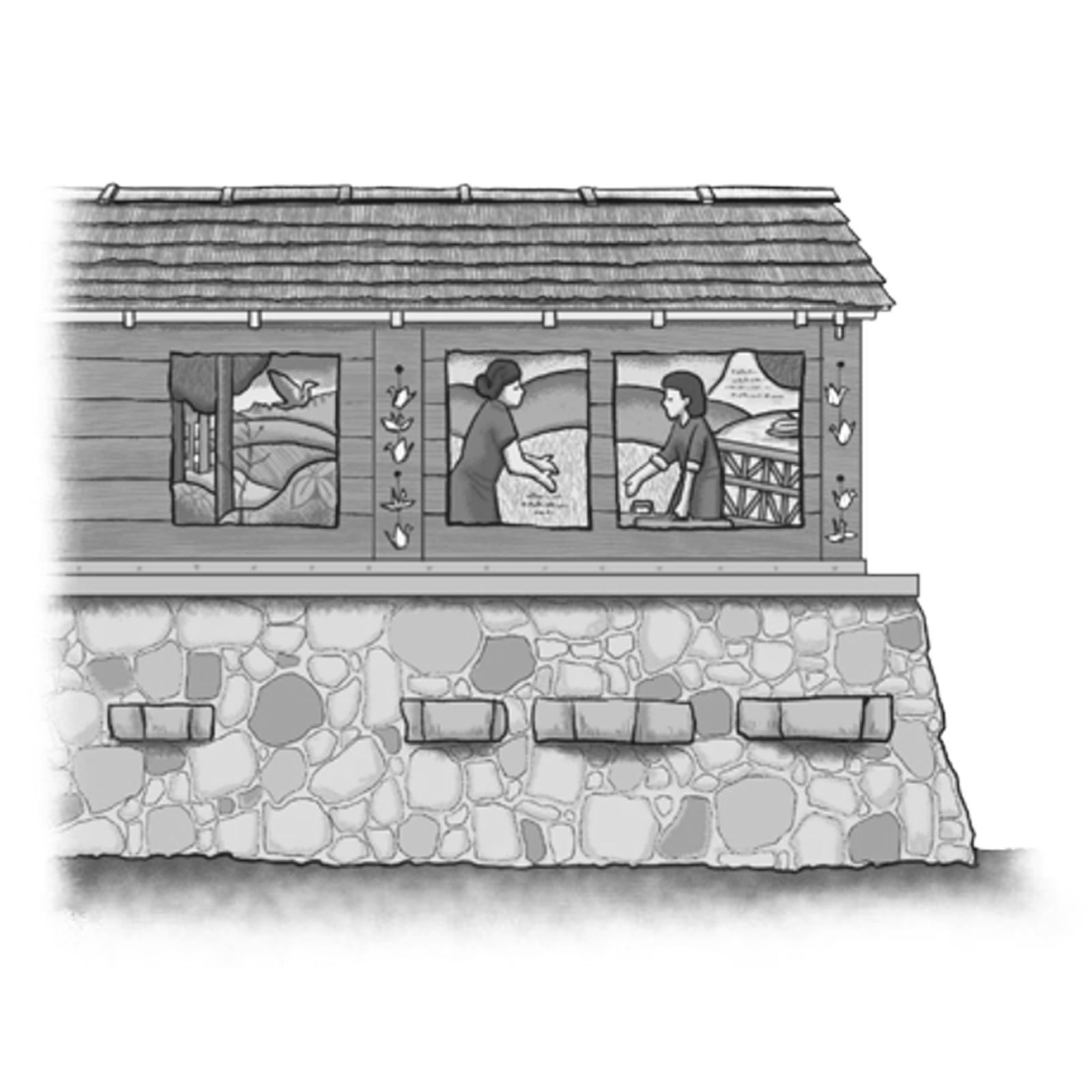
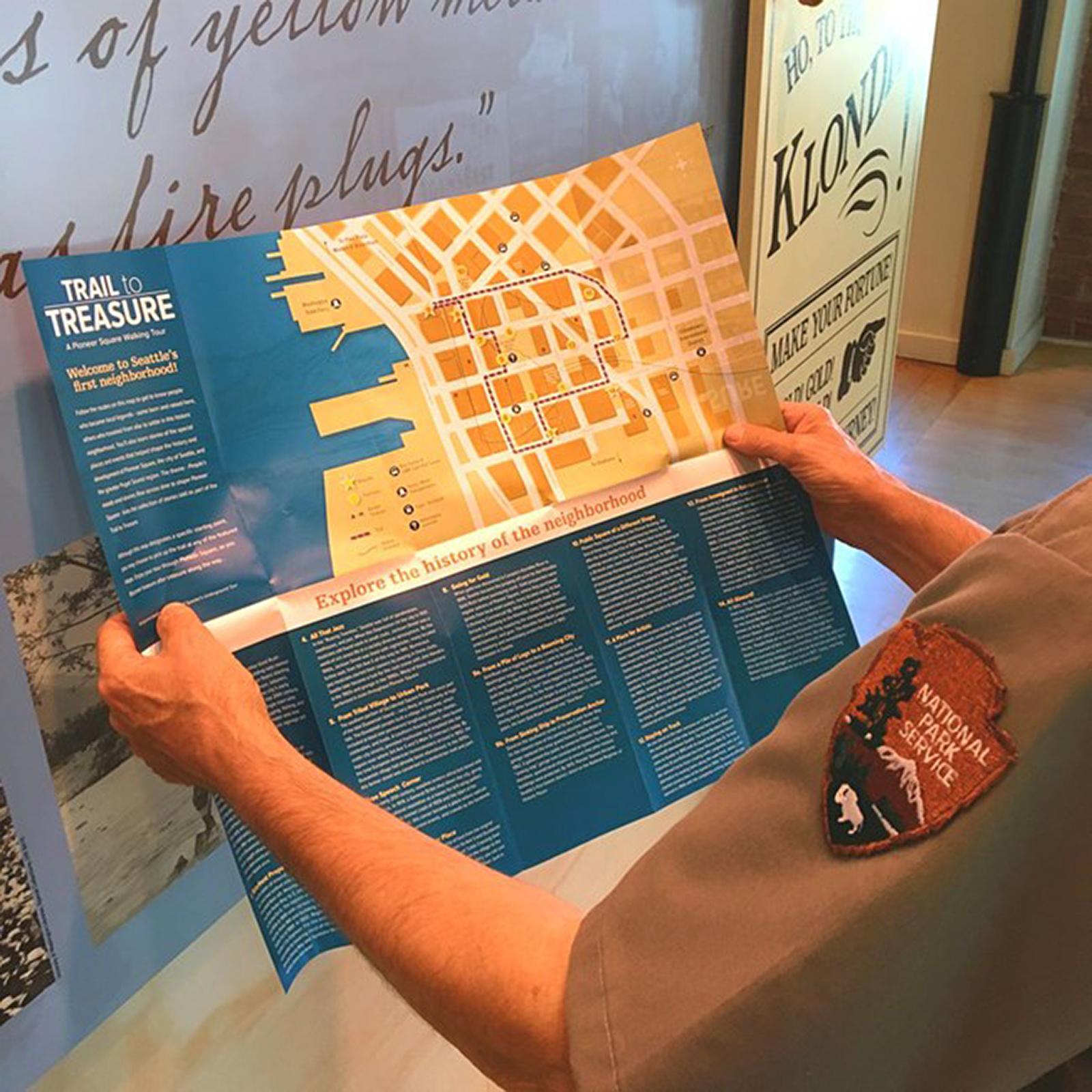
|
| Tours |
Count: 2
Japanese American Exclusion Memorial Audio TourOn March 30, 1942, more than 120,000 Japanese Americans were banished from their West Coast homes and placed in concentration camps during World War II. The very first group to be incarcerated was from Bainbridge Island, WA. This memorial serves as a reminder of these events: “Nidoto Nai Yoni” (Let it Not Happen Again) Japanese American Remembrance TrailExplore the Japanese American Remembrance Trail, an urban hike in Seattle’s original Japantown from Pioneer Square to the Chinatown-International District to the Central District. Visit Japantown past and present – from early pioneers to the World War II era to community life today. Immerse yourself in the personal stories of resilience, and explore connections to today. |
| Articles |
|